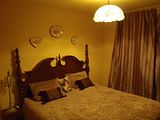Francesca and Henk-Jan's Backpacking Trip!
Saturday, August 7, 2010
Charming Chongqing
And so it happened that Jacqueline offered to drop us off at the bus station. She drove us to the heart of Chongqing, China’s most populous city with well over 30 million citizens, for a spicy Sichuan breakfast. I’d been particularly looking forward to trying the famous Sichuan hotpot, a favorite amongst locals and a killer for foreigners. Jacqueline parked her car near a hole-in-the-wall, explaining that this place had been her dad’s go-to breakfast restaurant. Her father loved spicy food, so his verdict went a long way for Jacqueline (and us of course) as well. The three sisters that ran the place handed us each a huge bowl full of broth and noodles, and asked if we wanted additional spices, beans, meat, intestines and some other additions to our meal. Francesca chose not to add anything, whereas I got the spicy variation with extra meat and beans. The intestines were wasted on me as well.
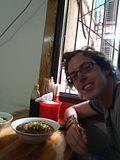
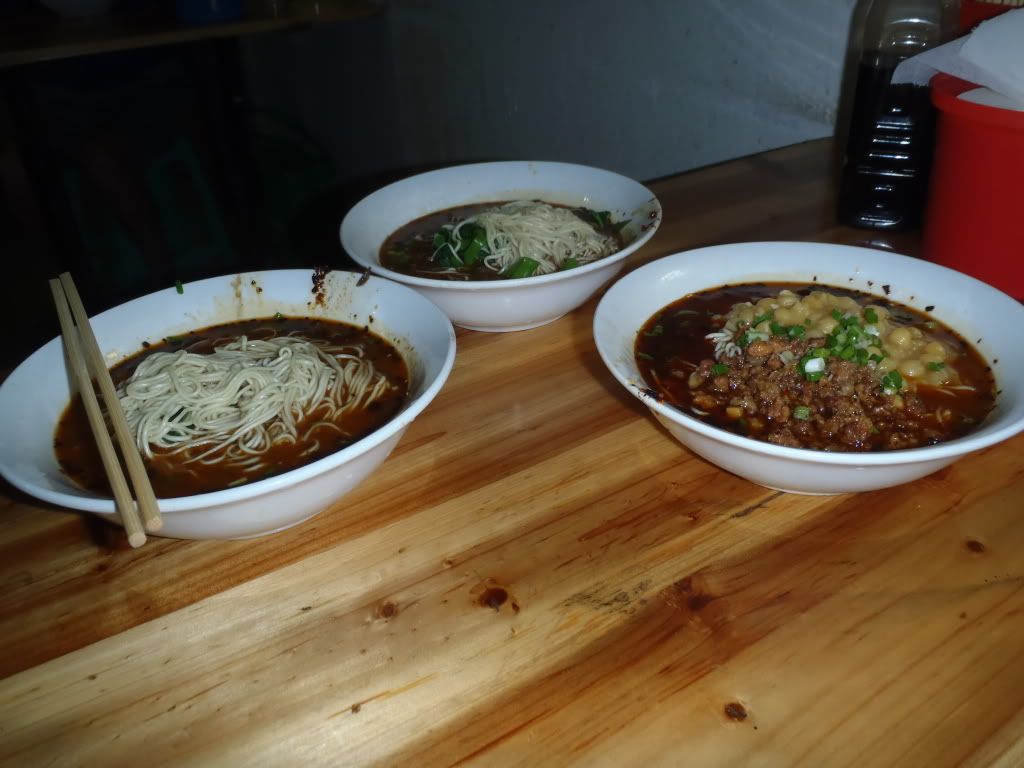
Boy, what a good breakfast that was! Sweat started pouring out of every hole whilst I emptied my bowl. Francesca did a surprisingly good job also! Furthermore, Jacqueline complimented us both on our chopsticks-skills – they have surely improved over the last month! I filled up on my bowl and some of Francesca’s left-overs. The meal was followed by a drive through more of Chongqing, revealing what an enormous city we’d entered. Construction abound, grime-covered high-rises all around, and people everywhere you look. It was no wonder driving to the bus station took another 30 minutes. After finally arriving there, finding a spot to park and discovering the well-hidden entrance to the station buying a ticket was the logical next step. Jacqueline got them for us, reminding me that it’s a million times easier getting a ticket for anything in China if you’re Chinese.
Before the bus would leave – just before midday – Francesca and I still had some time to kill. Jacqueline left for work, promising to pick us up later that day if we’d just call her. Francesca felt she hadn’t filled up entirely on the noodles. The McDonald’s near the station offered the perfect solution in the form of a take-away chicken sandwich meal. We returned to the boarding hall to find out our bus was ready to leave. Our tickets were checked, but directions to the bus were rather lacking. Luckily an older teenager standing behind us helped out and made sure we made it onto the right bus. The drive to Dazu was pretty scenic, but became memorable for an entirely different reason: the girl that had helped us came over to us and handed us a note, telling us that Tang Xiaoyan, a 7-year-old middle school student, wanted to be our friend. Friendly as we are, we sent a note back. We also looked around for a young person behind us, but spotted nobody in that age-range. However, another note came back with a phone number and the request to stay in touch. Francesca and I had dozed off during the latter half of the drive and missed the young girl’s departure from the bus. Arriving in Dazu, the mystery remained unresolved.
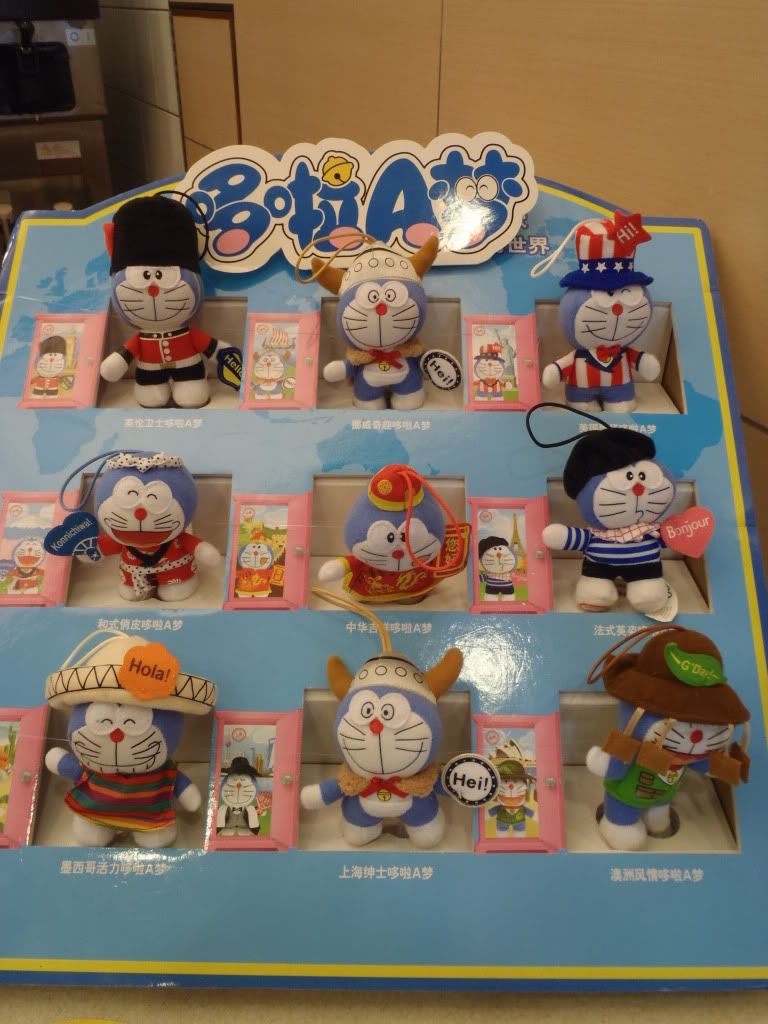
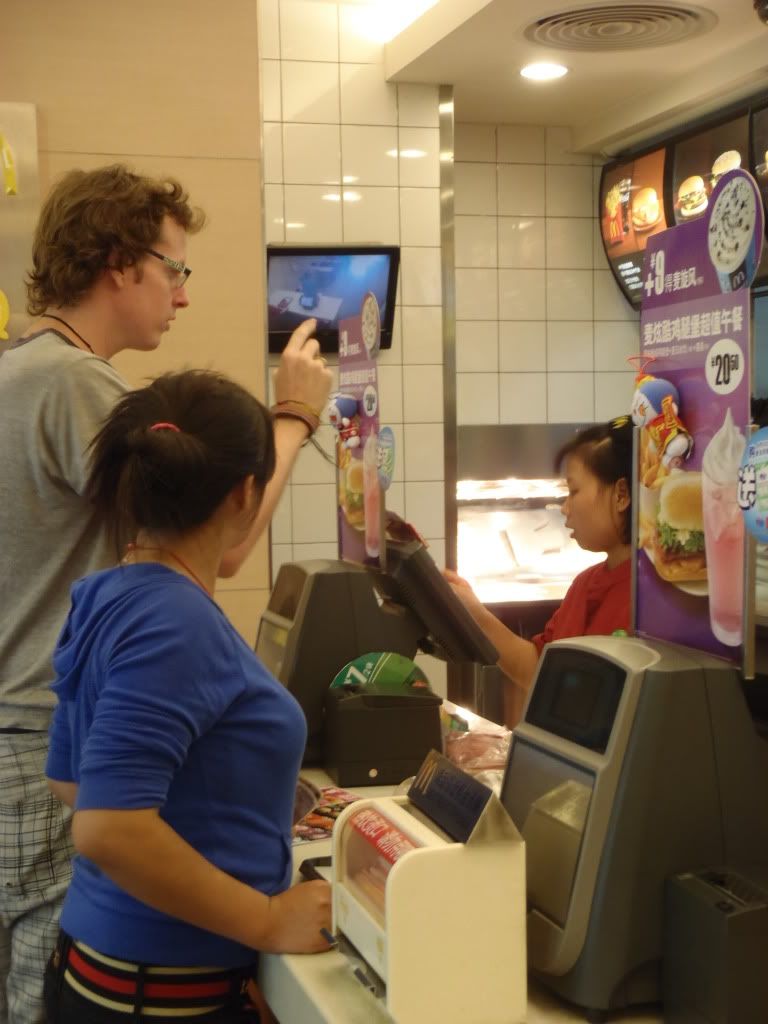
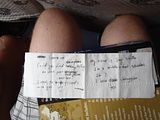
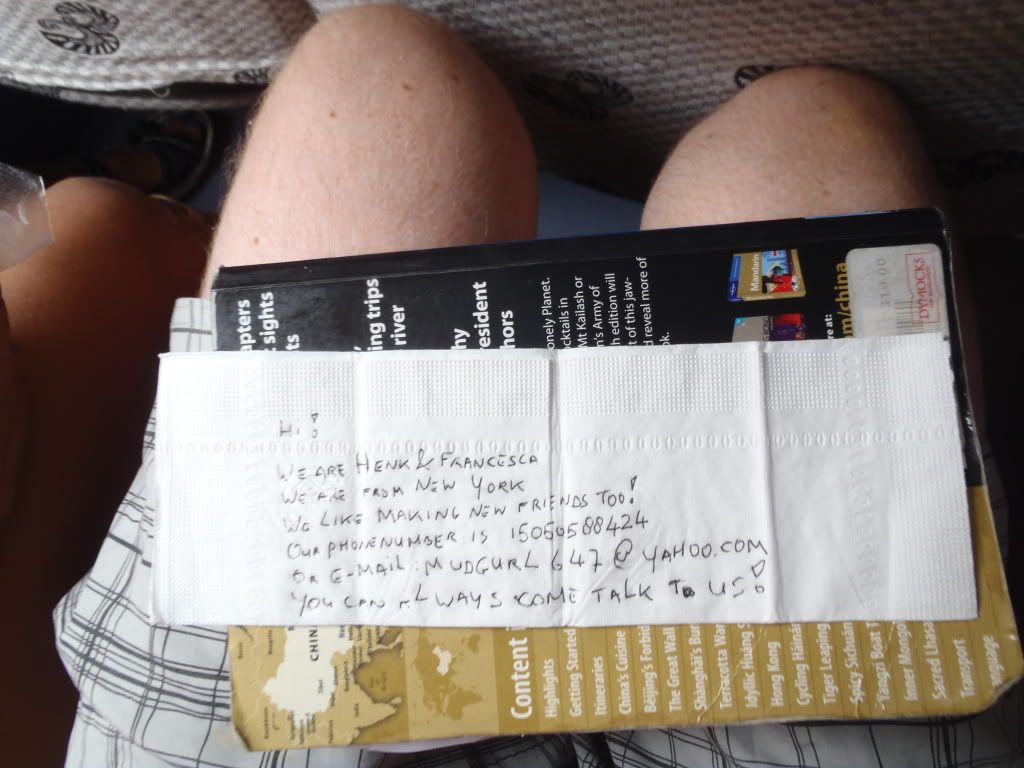
Onwards with our rock carving adventure! A taxi-driver nodded affirmatively when I told him where to go and drove us straight to the entrance of Baodingshan. Guides were a little expensive, but we had no choice and hired one to take us around. In addition to that we had to get tickets for the park, as well as an electric car to take us to the carvings proper. They sure make tourist attractions expensive business in China!
Our guide told us the carvings had been made during the Song Dynasty during the last decades of the 12th and the first half of the 13th century. One monk named Zhao Zhifeng sponsored the entire process. The first carvings soon appeared in our sights, welcoming us to the area. Turning the corner after the short greeting gave us the first real ‘wow’ in a long time. An entire cliff-face of several 100 meters was covered in smaller and larger carvings. We passed our first Buddha, followed by a gigantic lion, and entered a cave. Francesca and I were amazed to see the statues still held color! We tried to ask our guide what materials had been used to make the paint, but she sadly couldn’t help us to a satisfying answer. We admired the 12 Bodhisattvas along with 3 Buddhas in the "Cave of Full Enlightenment" for a while before continuing.
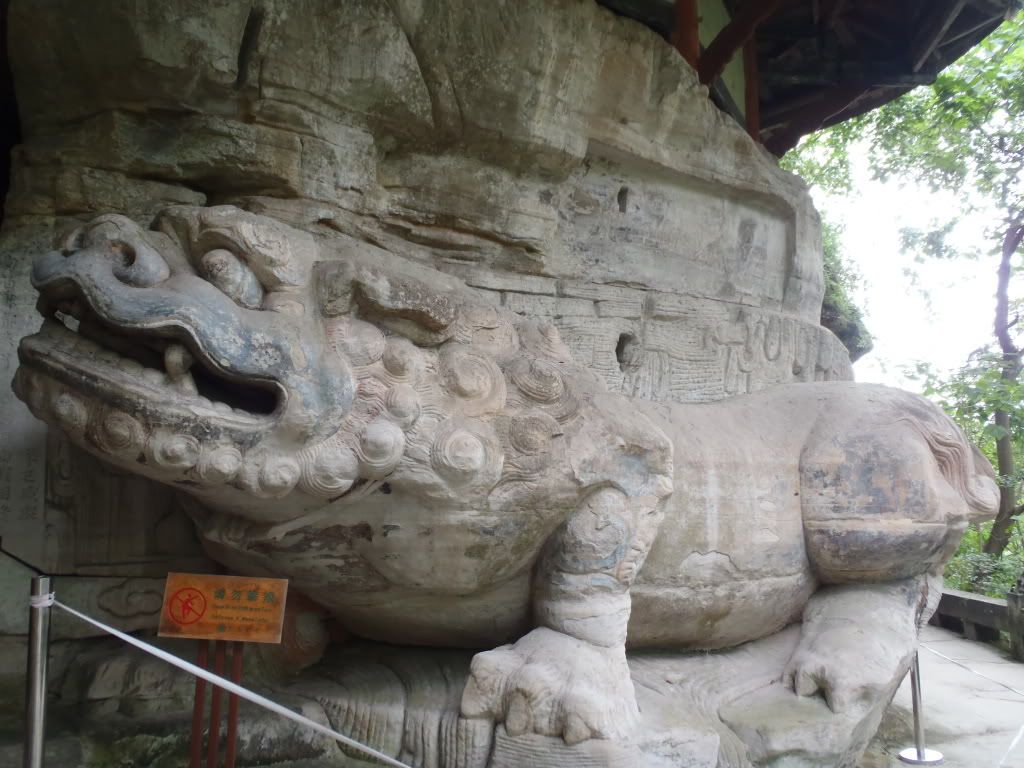

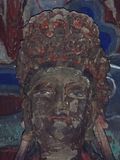
Outside several scenes with water buffaloes and their herdsmen told us that the “Ritual Site of Buffaloes” had been carved to show the difficulties a Buddhist monk might face on the path to enlightenment. Some herdsmen were enjoying the work of a flutist, whilst others had obviously indulged in too much alcohol. The buffaloes represented the monks’ hearts, pulling away from Buddhist goals. An impressive 10 carvings followed over a stretch of nearly 30 meters.
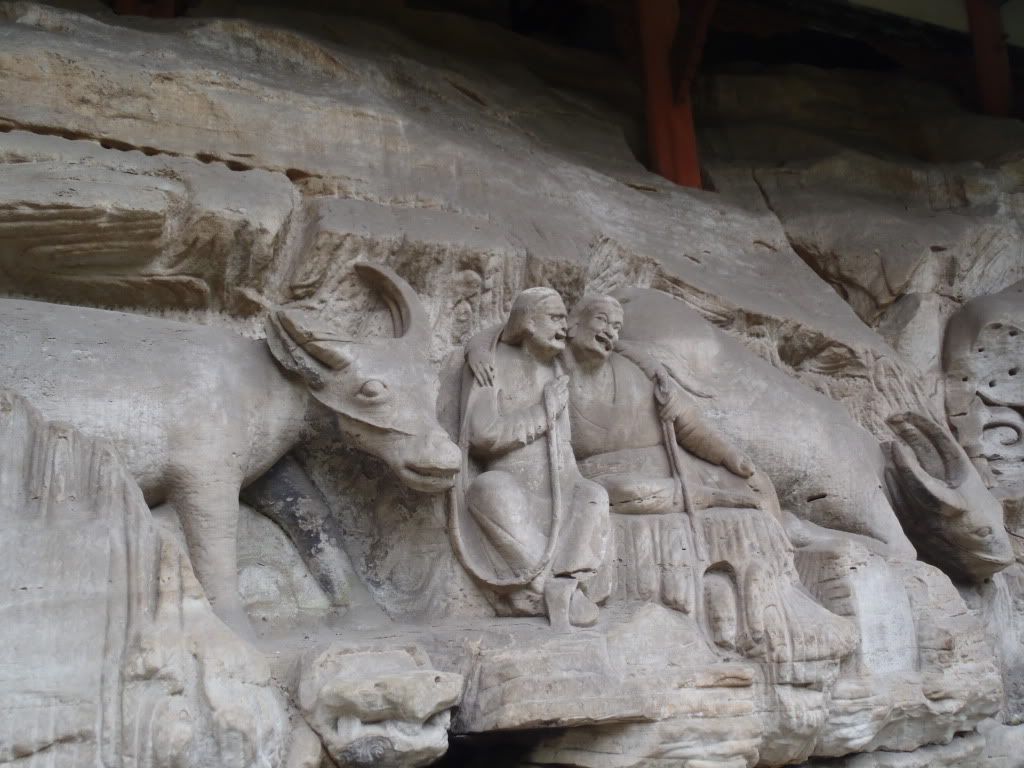
A long niche a few meters further up the path introduced us to the “Guardians of Buddhist Law.” They’d been put there to "guard the ritual site and subdue monsters," as the sign read. Sadly, some of the guardians had been severely defaced, leaving us to imagine what they’d once looked like. The gigantic “Buddhist Wheel of Life,” on the other hand, left little to the imagination. Yama, the Lord of Death, held an 8 meter high wheel, filled with 90 statues of people and 24 statues of animals. The scenes vividly depict the Buddhist beliefs of Karma and retribution.
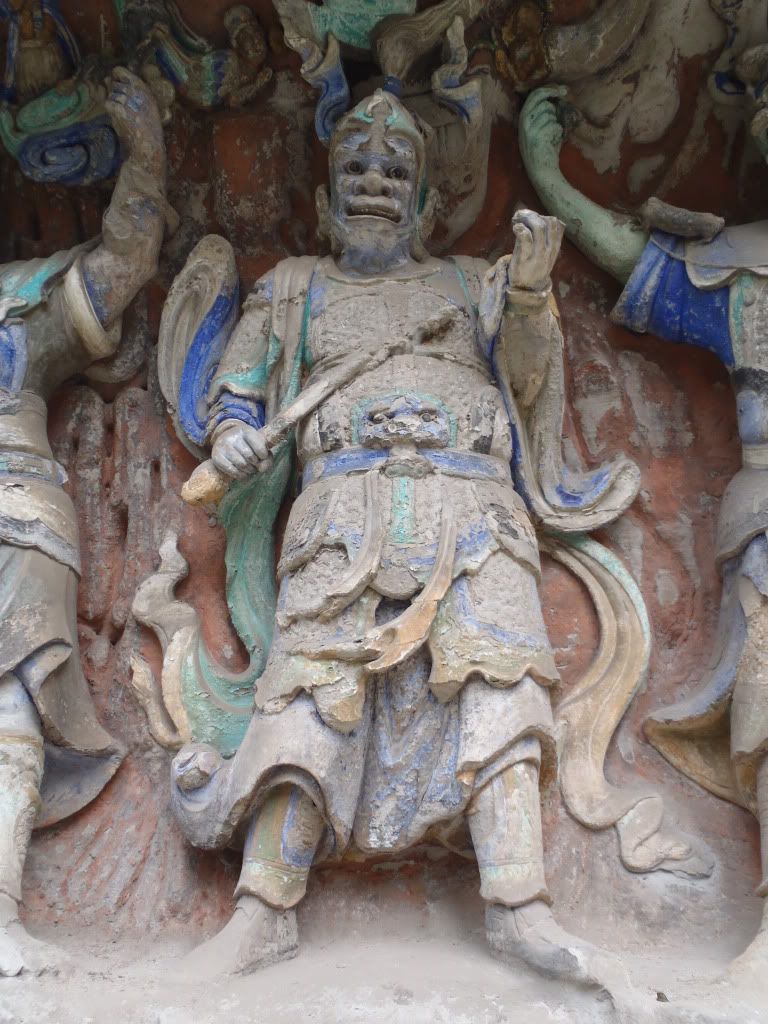
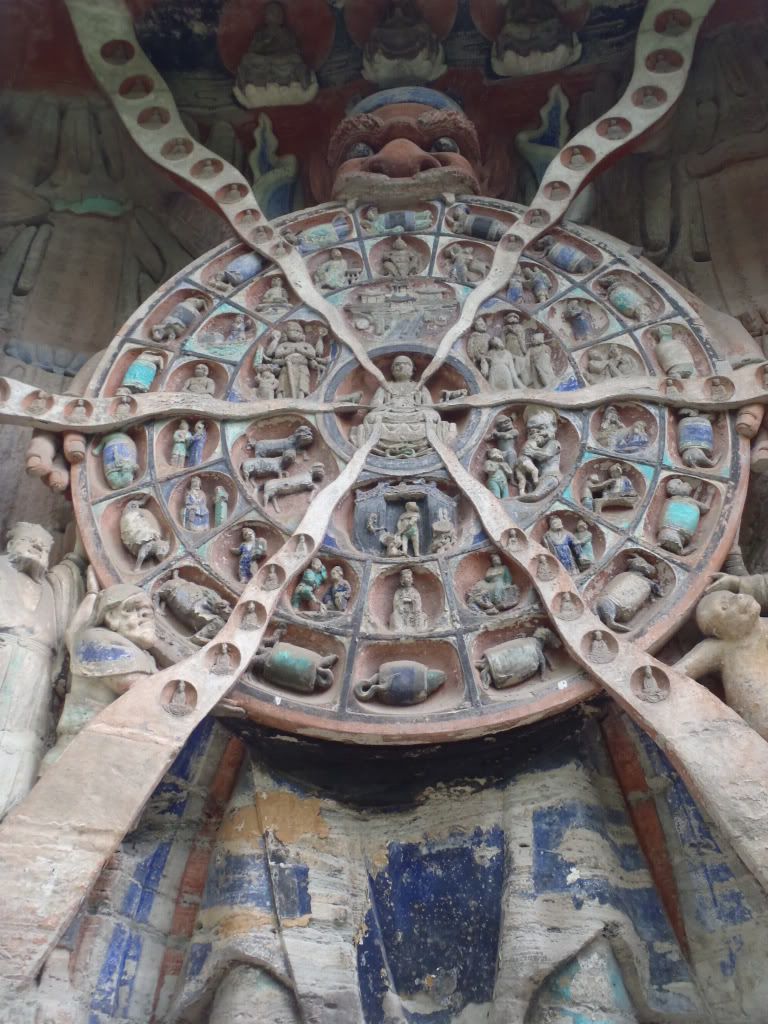

The “Three Saints of the Huayan School of Buddhism” along with another 119 much smaller Buddhas were a little less impressive, but did show the skill involved in making an elaborate carving such as this. The Saint on the left was holding a 500 kg stupa, which it’s managed to keep up for over 800 years now. A following cave was supposed to reward us with one of the highlights of Baodingshan. Sadly, the gold Avalokiteshvara (Goddess of Mercy) and her 1007 golden arms were under renovation… Still, we could fathom what the carving must look like by putting together the pieces we were able to see. It was still pretty impressive to watch all the golden hands on the wall.
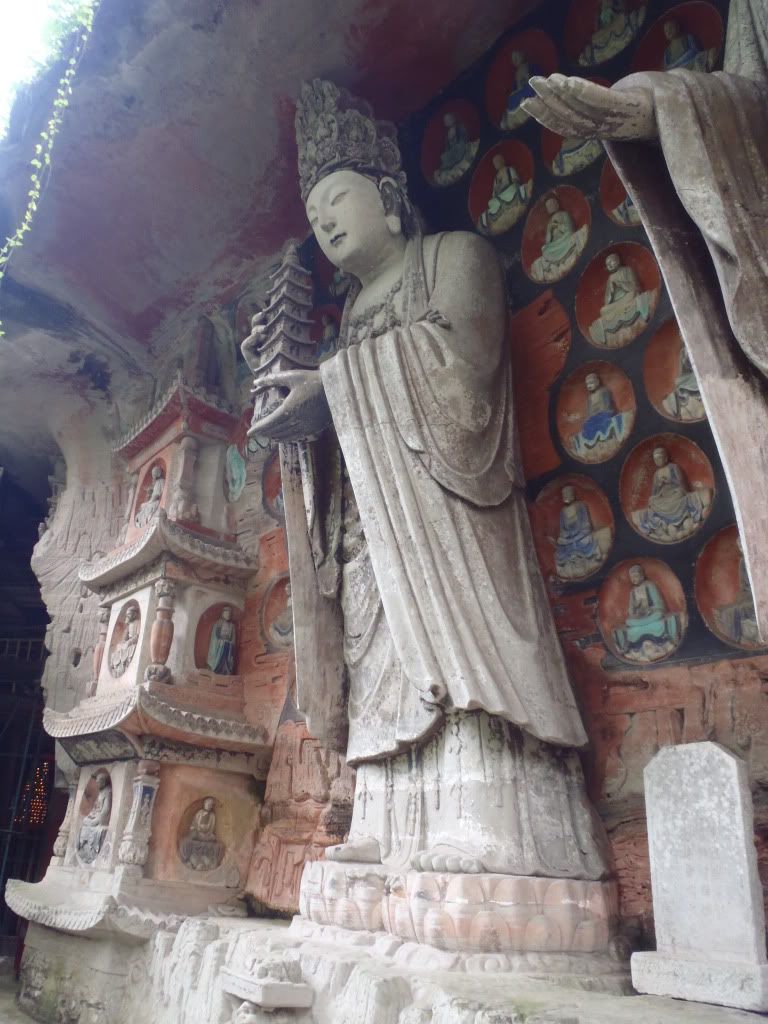
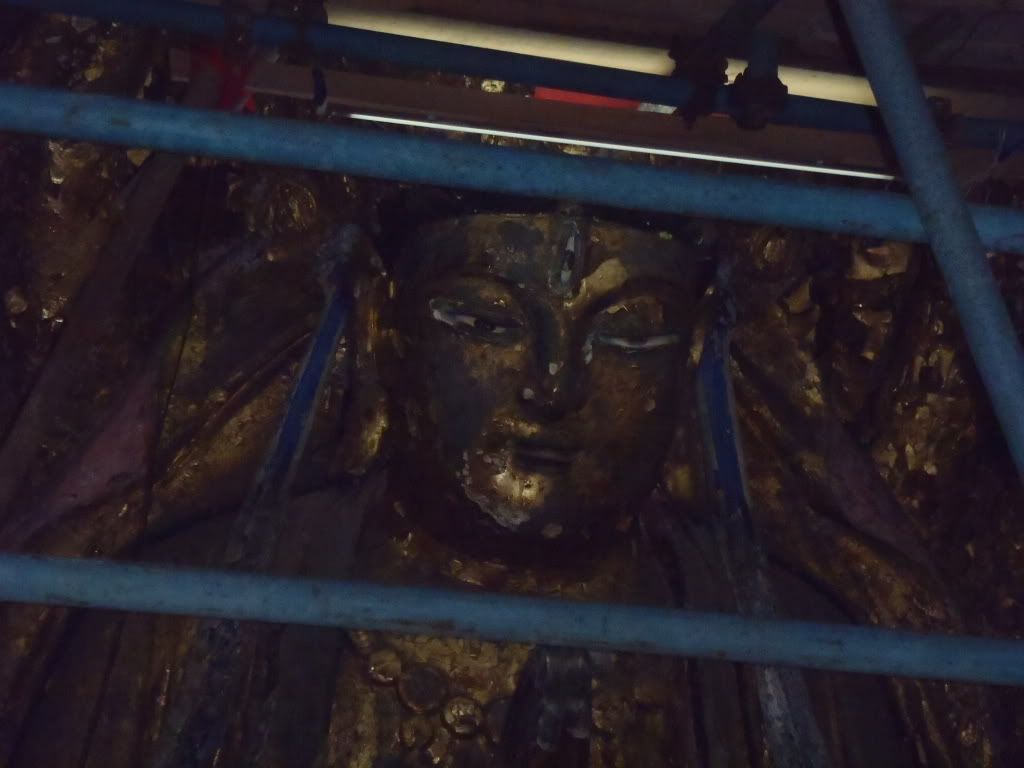
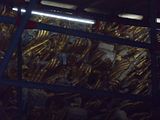
Once outside again we did get to see something awesome. An enormous carving showing “Sakyamuni Entering Nirvana,” reaching a length of 31 meters and a height of 5 meters, lay sprawled out in front of us. We learned that the sculptors had left parts of the body of Sakyamuni ‘in the rocks,’ to leave the actual size of the Buddha to their imagination. Francesca and I had our mandatory photo shoot with the giant face and some other statues in front of it. The tour continued with the “Nine Dragons Bathing the Prince,” a relatively small carving in a pond, with a young prince Siddhartha being wet by the never-ending flow of water from a dragon’s mouth.

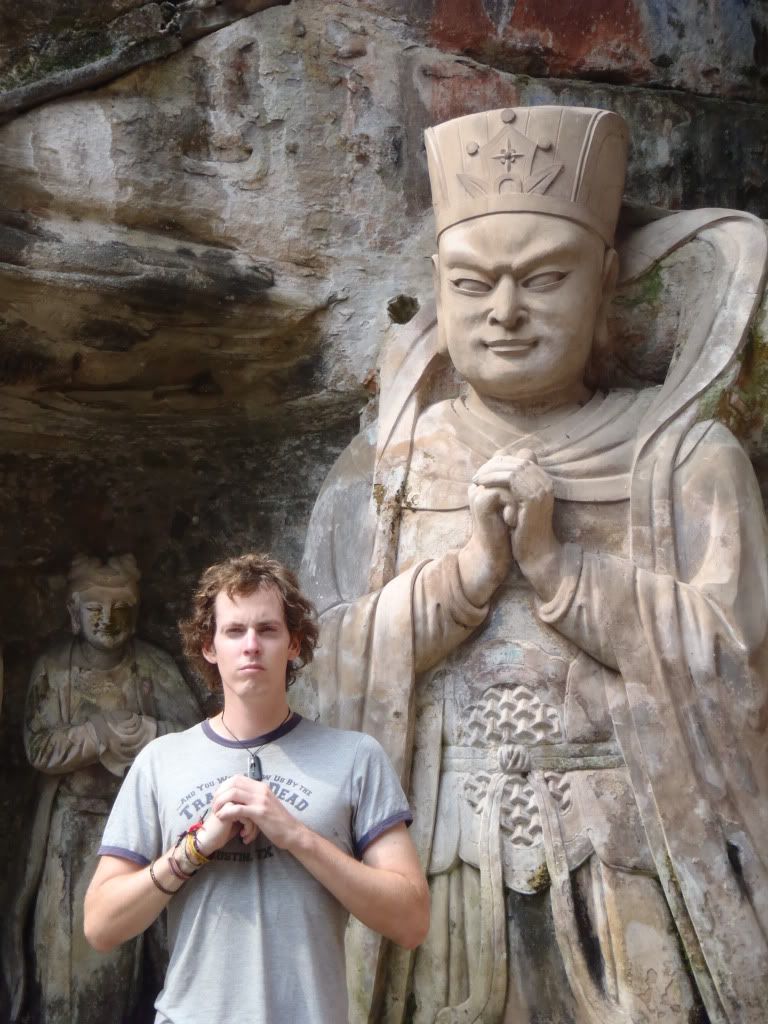
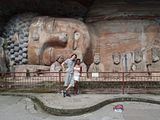
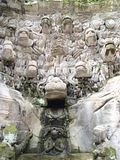
The “Niche of the peacock King Sutra” had been damaged (and repaired), leaving us with a rather sad concrete replica of what once had also been a detailed and striking carving. Our guide led us onwards to the “Niche of Parental Love Sutra,” with 10 carvings depicting 10 stages in life, and how parents can show their love for their children throughout the years. The enormous “Sutra of Amitahba and His Pure Land” left us baffled once again. It’s supposed to represent the happy world of Buddhist paradise, the saints that protect it, and the tests one has to complete to reach it.
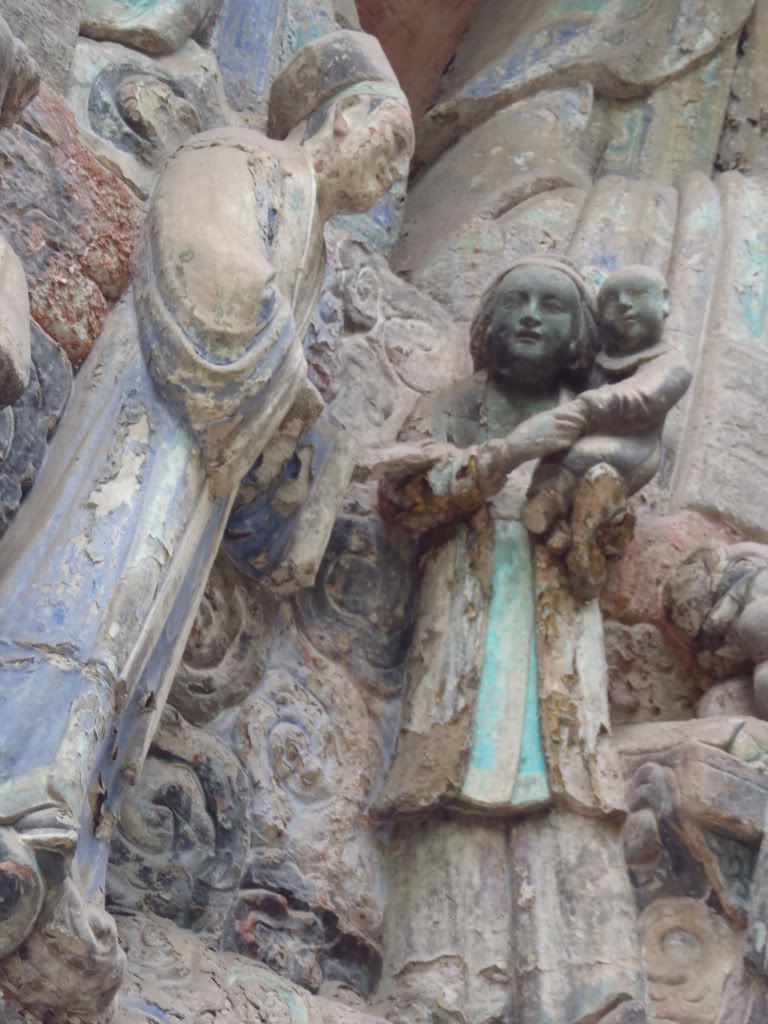
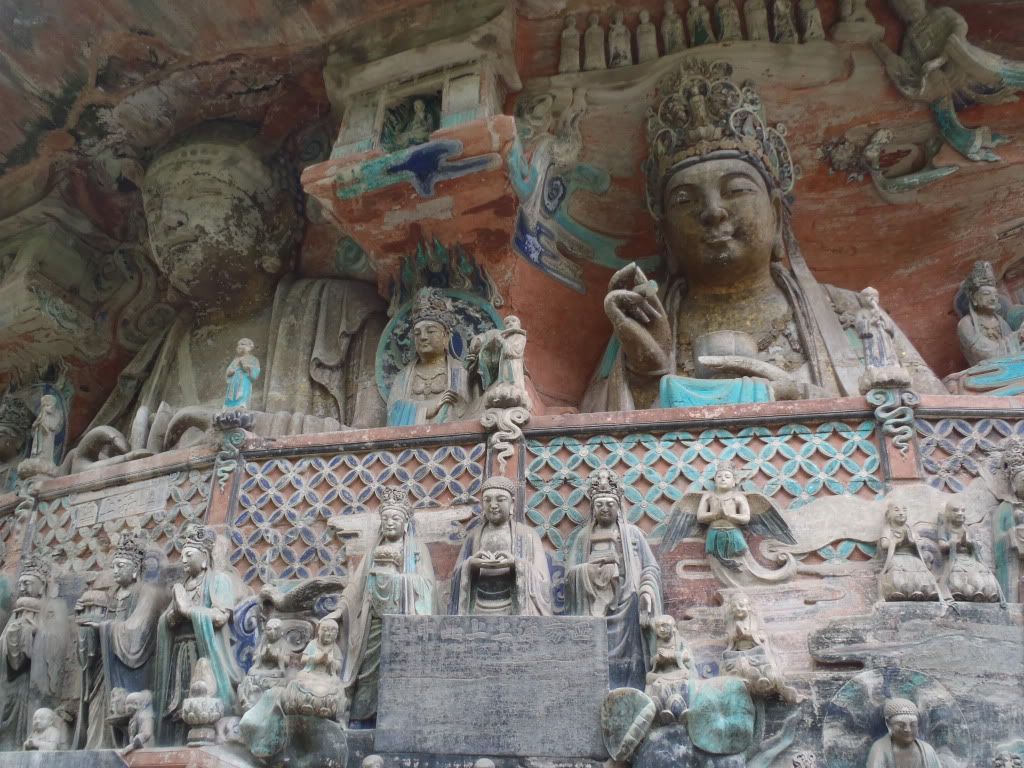
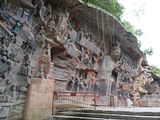
A little more gruesome, but no less remarkable was the “Niche of the Nether World,” where 18 different carvings show the many layers of Buddhist Hell. We spotted people getting gored, getting boiled, being beheaded and much, much worse. Hell hadn’t been intended to be the end of the carvings, but as funding ran dry in the later stages of construction the final niche, the “Ritual Site of Liu Benzun” had not been completed. However, since it hadn’t been finished it left researchers with a great way of finding out how the sculptors made their art. A final test awaited us, to see if we would have good luck and a happy life. We had to stand in one spot near a character on the wall, close our eyes and spin around 3 times. After completing these steps we had to reach out for the wall: touching the character meant great fortune, missing it meant bad luck. I managed to succeed on my first attempt whilst Francesca took two tries to reach it as well.
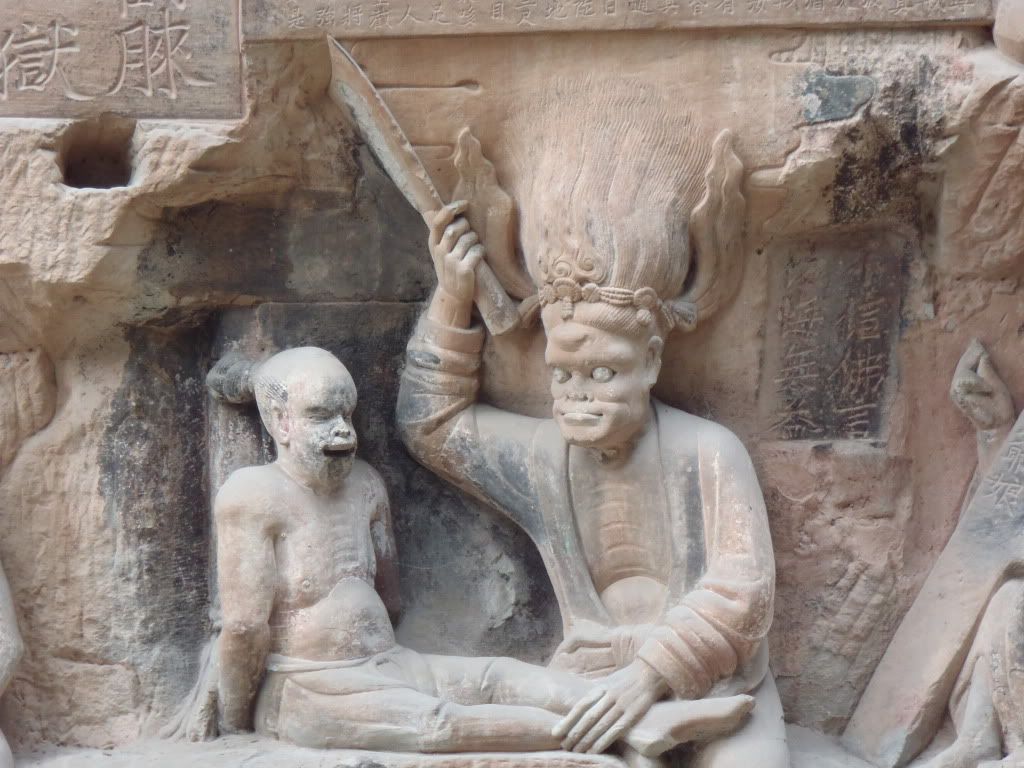

Since we’d paid so much for the guide Francesca and I made sure to see an ancient temple near the carvings as well. We passed several awe-inspiring and colorful Guardians on our way to the Jade King, a 3 meter high statue of a Chinese God. Impressive, but the Chinglish on the signs outside was much more amusing. Another hall held a 3 meter high Buddha, followed by a hall with the Buddhas of Past, Present and Future. 5:00 PM was fast approaching and Francesca and I wanted to be back in Chongqing for dinner with Jacqueline. Our guide arranged a driver back to the bus station where we were just in time to catch a 5:30 PM bus. We arrived in Chongqing just past 8:00 PM and were picked up by our host.

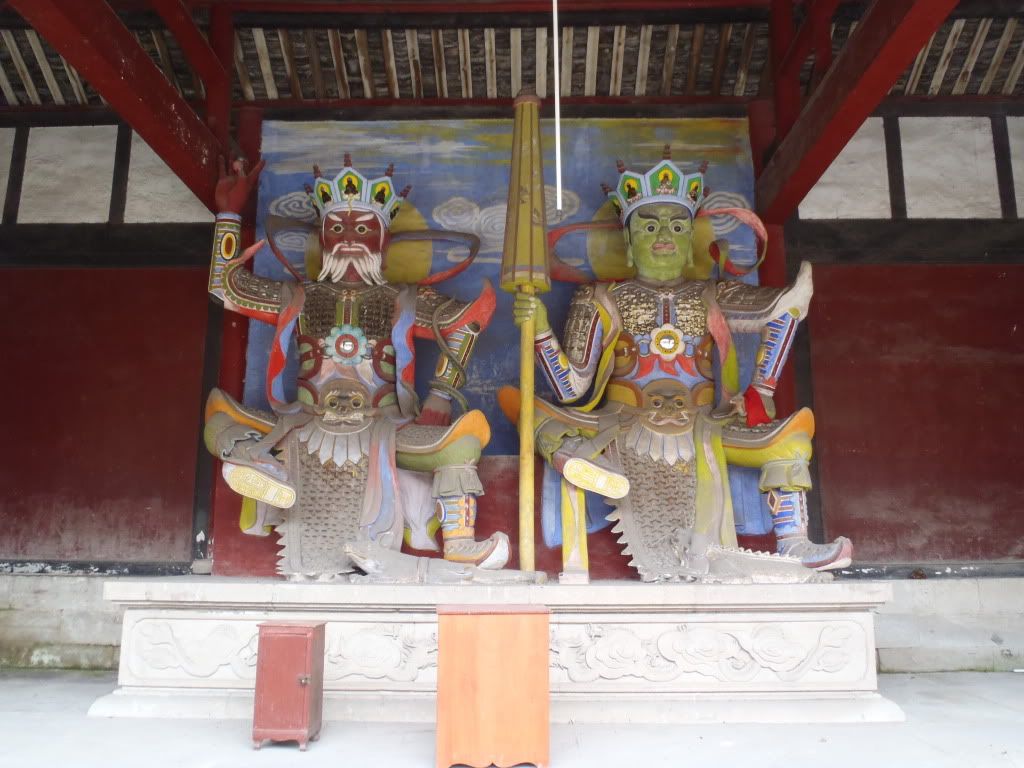
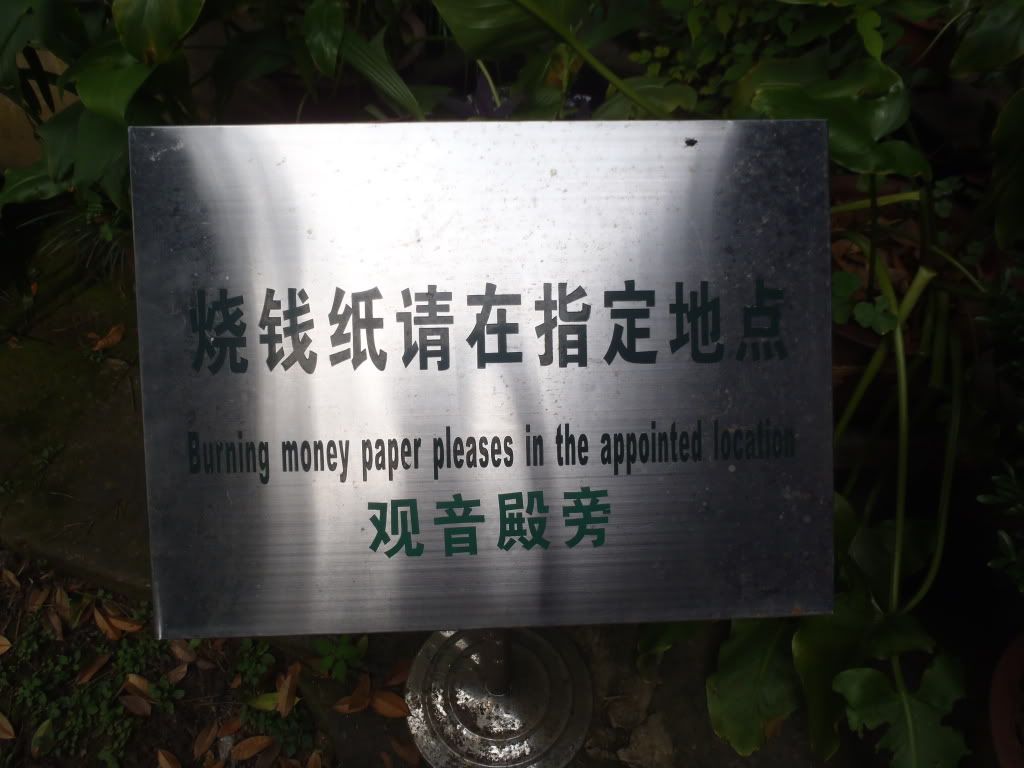
Jacqueline asked us what we wanted to eat – we answered that we’d be happy to eat whatever she wanted us to try. Francesca and I were taken to one of the hip areas of Chongqing, the ‘Paradise Walk,’ where we were surrounded by youngsters enjoying the enormous shopping mall. Parking was a problem, but as we reached the restaurant it proved well worth it. Jacqueline ordered us an enormous table full of her favorite foods. One dish she ordered was a surprise, but tasted succulent. We both tried our best guesses, coming up with ‘some part of some fish’ as our best answer. Pretty close as it turned out: we were eating fish lips! Some giant fish they must have been! Other dishes on the table were spicy chicken, sliced jellyfish, mushrooms wrapped in battered shrimp, Chinese cabbage in oyster sauce, a special rice dish and a mushroom soup. So much food! By 10:00 PM the table was pretty empty and our bellies REALLY full. We were also the last remaining customers so we left for a drive through Chongqing at night.


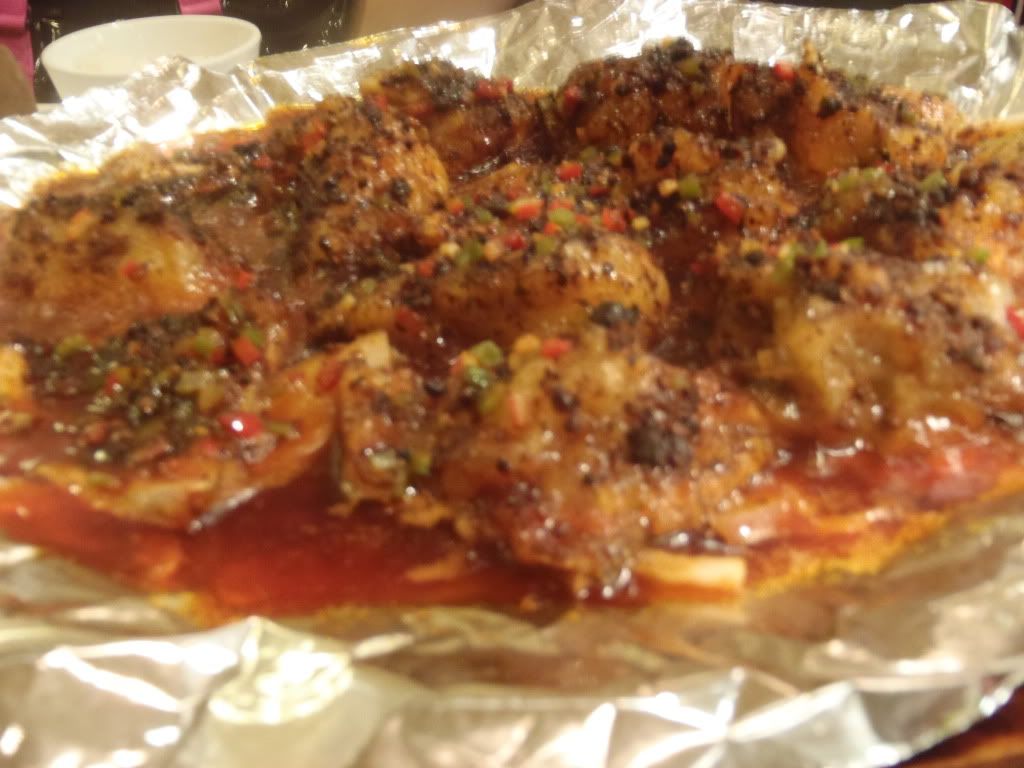
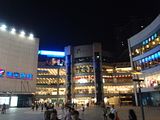
Jacqueline showed us the artsy opera house and the science & technology center, as well as the lightshow on the other side of the river. Pretty neat, but since the day had been really long Francesca and I longed for our wonderful bed and asked Jacqueline to drive us home.
The next morning Francesca and I woke up even later than the day before. Jacqueline had a day off and took it equally easy. Besides, we really had to get our act together to finalize our trip to Tibet. It was past 2:00 PM when we finally sat down for lunch. We ate some great buns with peanut butter and a tasty tomato soup. Whilst eating Jacqueline told us a little more about herself: she’d studied business in Canada, after successfully applying for two prestigious design schools (interior design had been her dream), but being pushed to study something else by her parents. Now, she finally got to do what she wanted and ran her own successful business. Looking around the house we could definitely tell why!
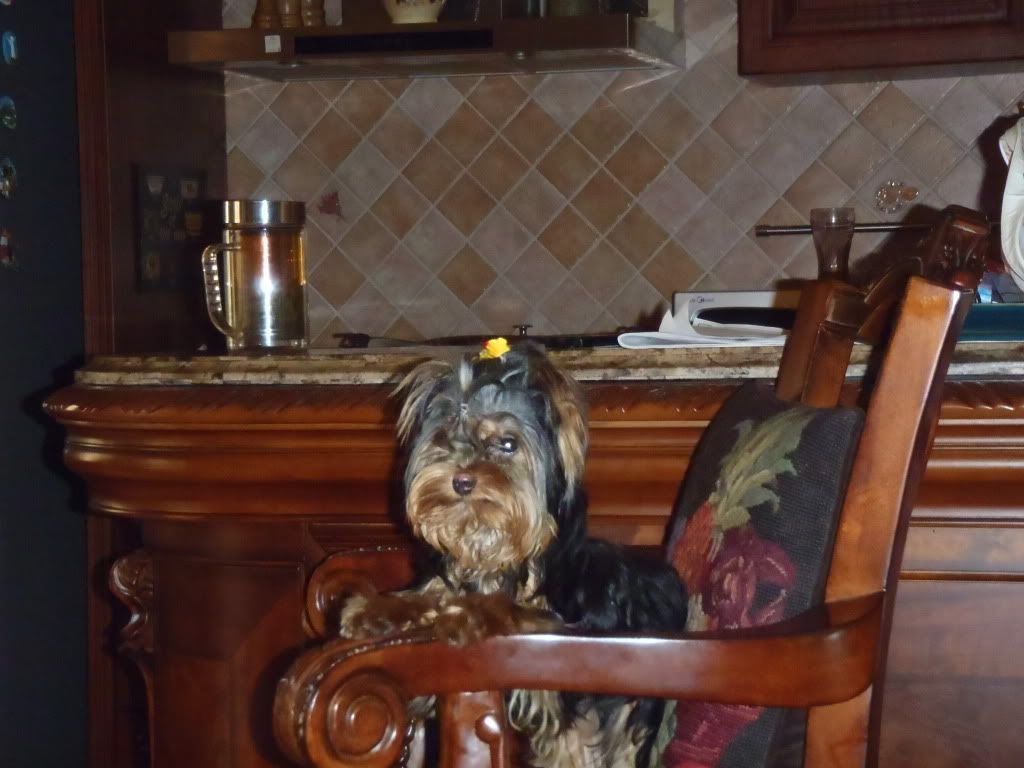
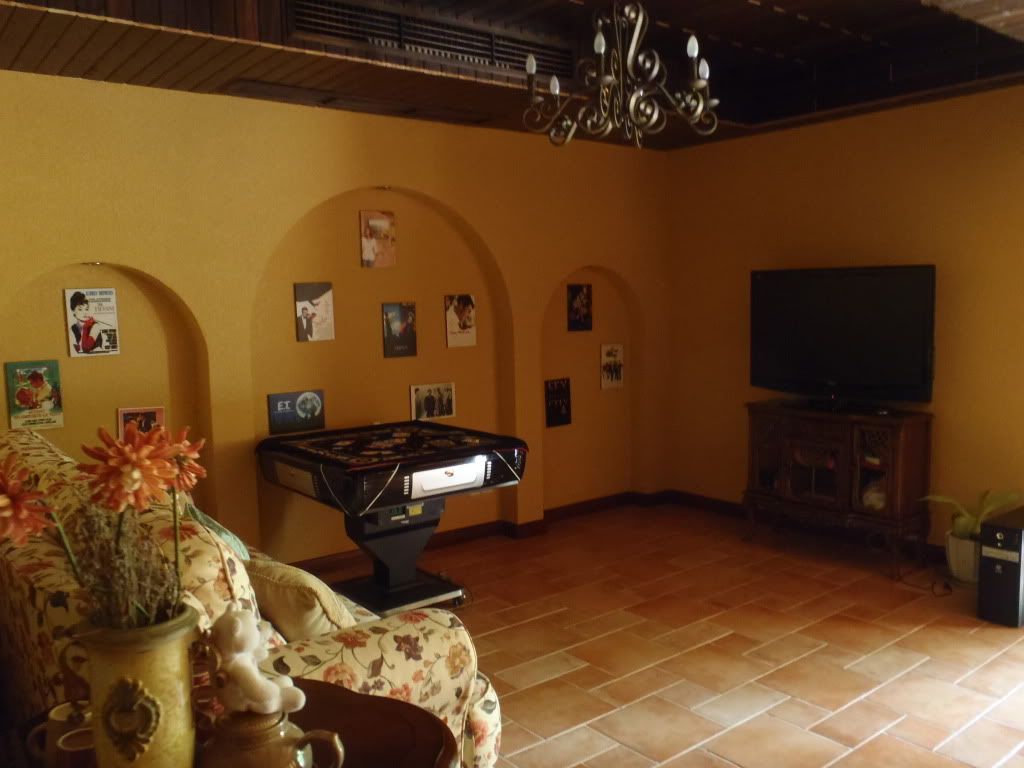
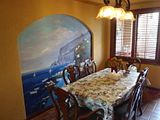
An hour later Jacqueline offered to show us Chongqing’s old city. We needed to go into the city anyway to get train tickets to Chengdu for the following day, as well as some help purchasing medicine to help us deal with impending Acute Mountain Sickness (a well-known problem for travelers to Tibet). With those two acts soon out of the way we were free to walk around the crowded area named Ciqikou. The town was at one time an important source of chinaware and used to be a busy commercial dock during the Ming and Qing Dynasty. Nowadays it only attracts droves of tourists. Our arrival added to their tourist experience as the ‘Laowai!s’ and pointing fingers engulfed us. Nonetheless, it was interesting to see the architecture and try some local snacks.
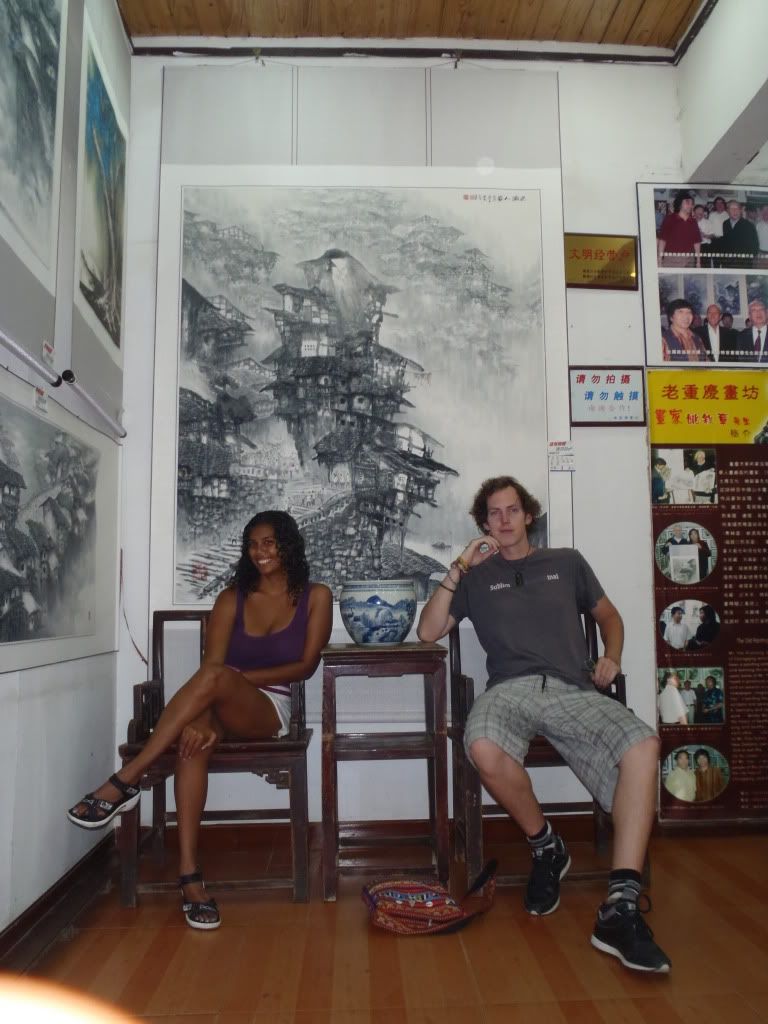
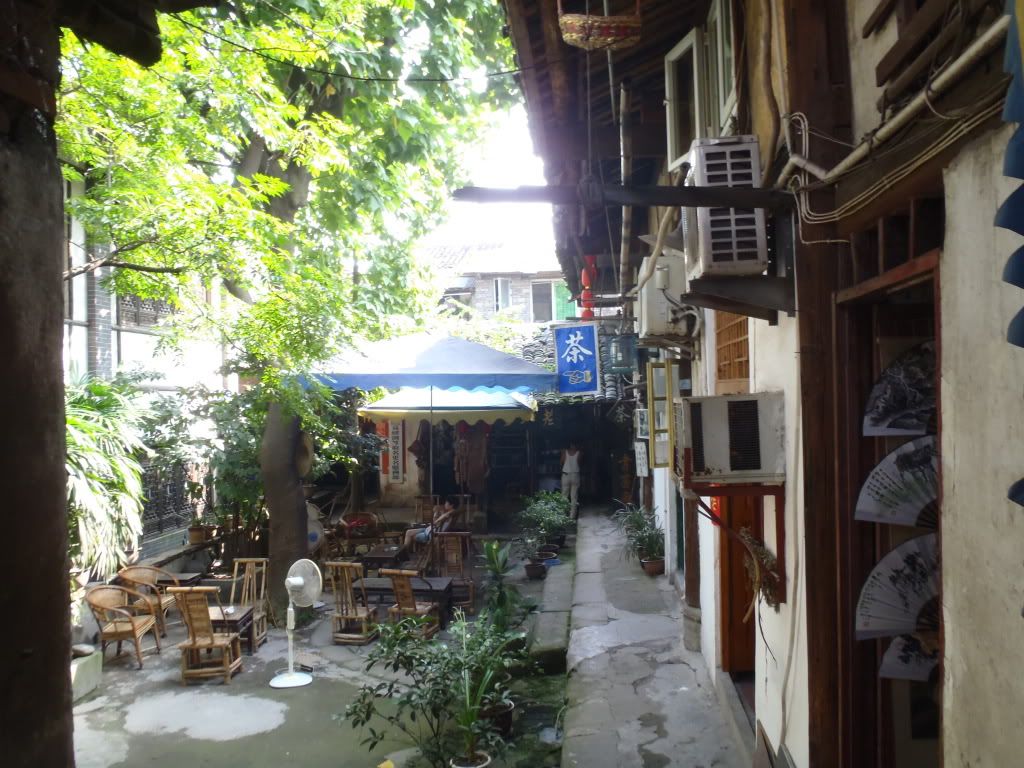
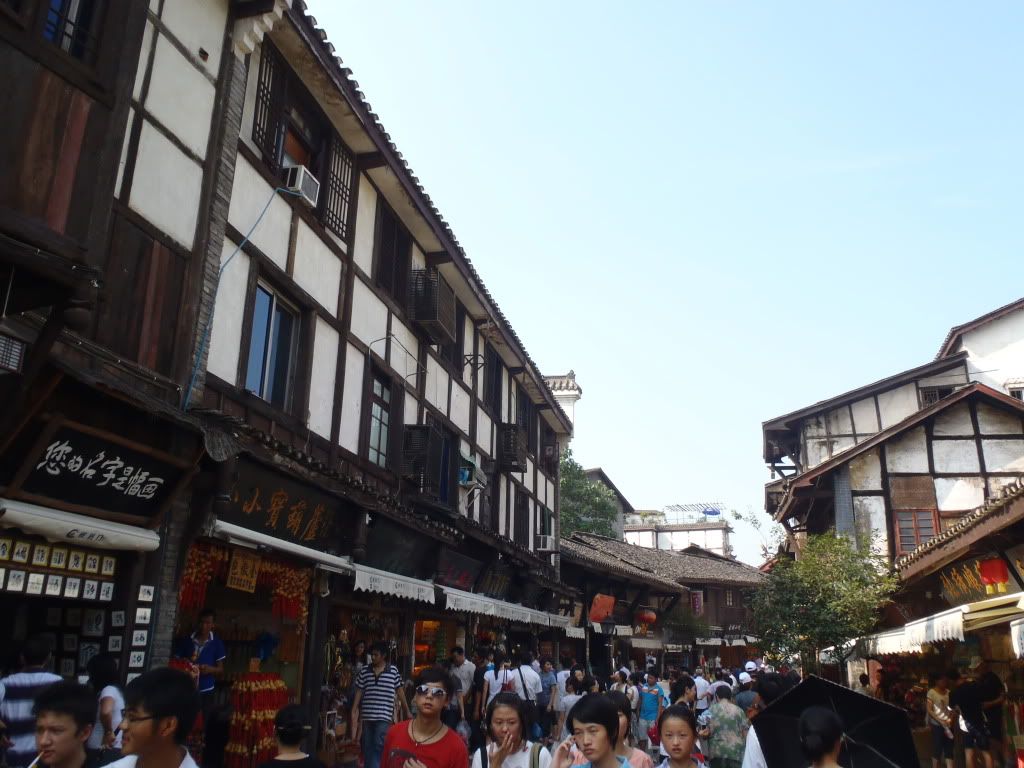

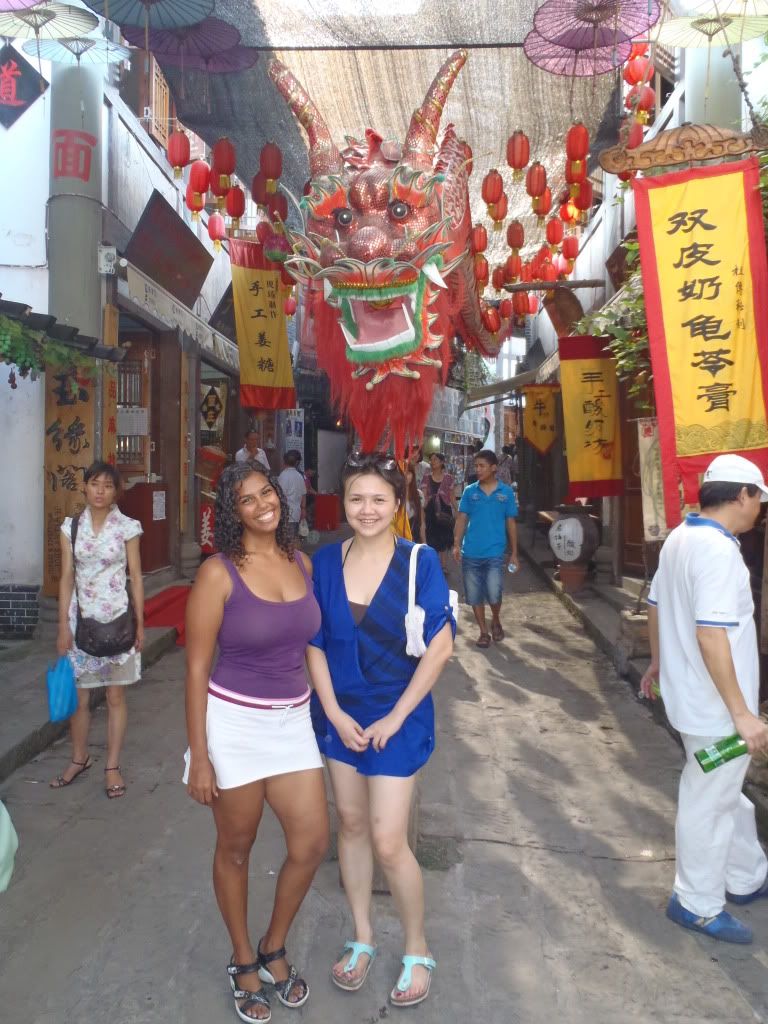
At the end of our tour of Ciqikou, Francesca spotted a souvenir she’d gotten herself the last time she was in China as well. I bought both her and Jacqueline a “jelly-filled piggy that squishes flat when you throw it at something,” as Francesca later described it. After a bit of driving and walking around we arrived at a shopping and dining area near the river. Jacqueline took us into a different part of the city, where we came to the Chongqing Food Street. Two small stores about halfway through the street had an impressive queue, so we went to check it out. The first one sold an appetizing list of items such as chicks-on-a-stick, roasted chicken-heads, and many much worse-looking snacks. The second store, however, sold a local spicy noodle dish. I had to buy a ticket and stood in line for a while to get my meal. Jacqueline warned me it’d be spicy, telling me to get ready to start sweating. I sat down and started eating, unaware of the locals that were surely looking at me. The two girls stepped back whilst I quietly ate and dripped sweat from every pore, thoroughly enjoying my meal.
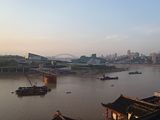
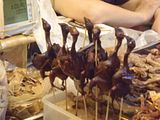
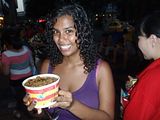

Dinner would be another Sichuan and Chongqing specialty: ‘huoguo,’ better known as hotpot. Sadly, I was the only one really eager to eat this – the girls felt for something a little less volatile. When we heard we’d have to wait for 45 minutes for a table that sealed the deal: we were going somewhere else. Francesca promised me I’d still get to try a hotpot before we moved on to Tibet.
Around 9:00 PM we were back where we had started the evening. This location had once been the start of Chongqing a long time ago. The government later replaced the old buildings with newer versions in the old style and filled them with shops and restaurants. We walked around for a while, admiring the many stories and neon lights. The complex even included a man-made waterfall! All the ambulating had made us rather hungry, so the only Subway in town – which Jacqueline loved – became our solution to our lack of food. We discussed going to a bar for a drink, but knowing that we had to get to Chengdu the following day we chose to go back to our temporary home and get ready for departure.

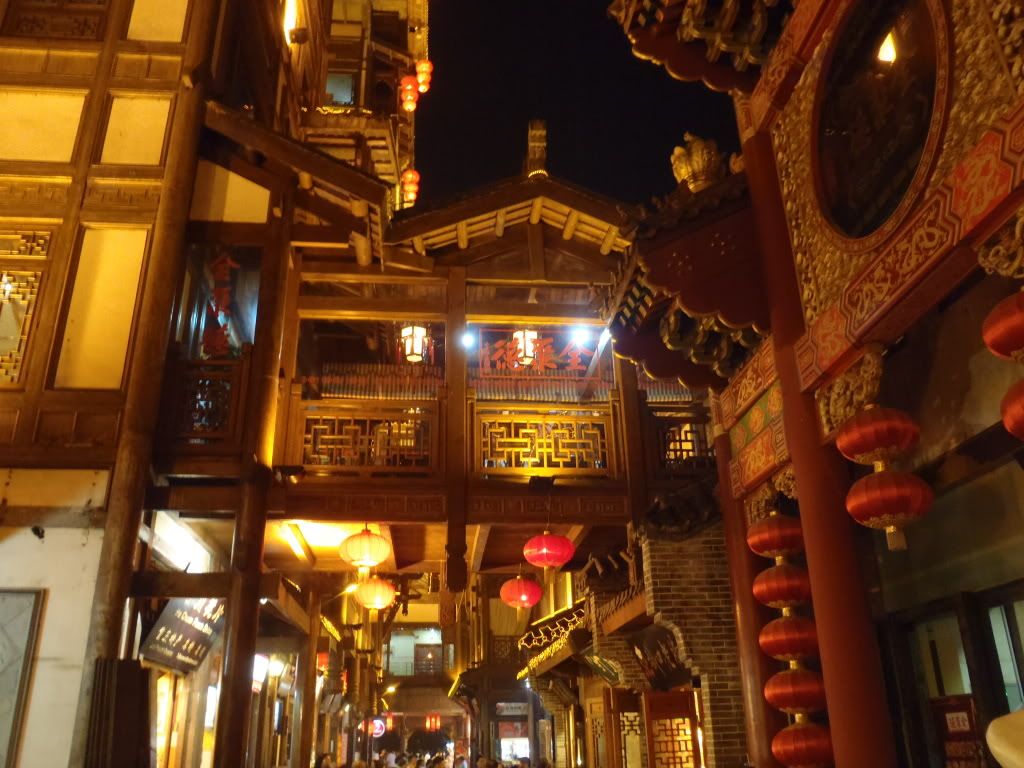
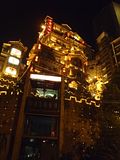
Our final day with Jacqueline and her parents we finally got to meet her old folks. Jacqueline’s mom had been studying English, but found it very difficult and couldn’t converse with us yet. Her father didn’t speak any English and seemed content with smiling at us. Francesca and I were invited to join the family for a brunch before our departure and of course we gladly accepted. The table was filled with corn, roasted peppers, 1000-year-old eggs and some sweet and sour pork. I hadn’t tried the eggs yet, but found them quite edible. Jacqueline’s mother even showed me how they’re made: normal eggs are covered in a thick layer of a special mix of sand and other ingredients and then left to dry for a few days. Interesting!
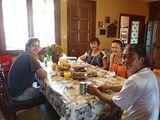
Around 1:00 PM it was time to say goodbye to our gracious hosts and their awesome dog. We were sad to leave and really wished we could’ve stayed longer. Alas, Tibet was waiting and we needed to keep moving. Jacqueline drove us to the train station, where we were just in time to join the seething masses queuing to get aboard the bullet train. We gave her a big hug and went through security, ready to explore Chengdu.
Thursday, August 5, 2010
Terracotta Temptations
The flight was quite nice, as Francesca tried to take some pictures of the sunset and beautifully colored skyline. She played with the panorama setting: here’s the result… After that she dozed off on my lap and didn’t awake until we landed in Xi’an. Getting to our CouchSurfing host in Xi’an, Raphael, was extremely easy since he’d texted us the address in Chinese. All we had to do was haggle with a cab driver to take us there for a reasonable price. The drive into and through the city took nearly an hour, putting us at Raphael’s place around 11:00 PM. We gave him a call from behind the gates to his high rises complex and he picked us up. Raphael showed us our room for the next few days and I sat down with him to talk for a while about his life in China.
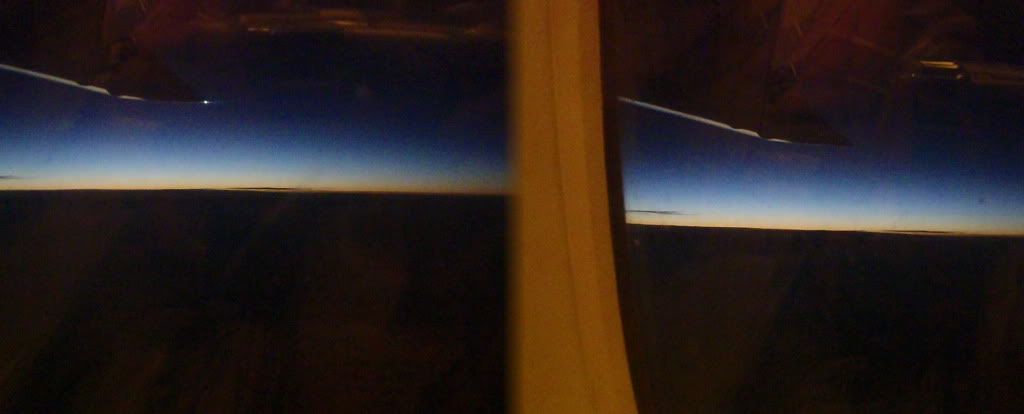
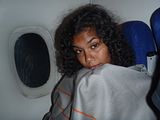
Raphael told me he works for a French company that produces tubes, which they then sell on the Chinese market. Being the only foreigner on the work floor meant he had to learn Mandarin and I was impressed to learn he spoke it quite fluently and was even able to write Chinese Simplified. Very handy skills to have! He also told me he’d been in China for quite some years, and enjoyed life. It’s interesting to see how some people manage to adapt to the Chinese way of life so easily. Raphael did admit he would love to go travel like us again and our stories only strengthened that feeling. A little past midnight I looked for Francesca, who’d already gone to rest and we fell asleep together.
The next morning, the 2nd of August Francesca and I got off to a bit of a slow start. We wanted to go see the Army of Terracotta Warriors, but had to do some research on how to get there. I made Francesca a delicious grilled cheese sandwich, whilst she explored our options. There were some buses from the train station, but keeping our location in the city in mind it didn’t make sense to go there. Instead, we grabbed a taxi around 11:30 AM and were driven to the entrance of the enormous complex.
I was getting quite excited at this point, because I’d expected much of the Terracotta Warriors. We bought our tickets and audio guides, got in the queue for the carts to take us to the halls and entered the park proper. Let me start off by saying that the halls containing the Warriors are works in progress: since the discovery archeologists have been working continuously, unearthing more and more artifacts; even entire new tombs.
In fact, the discovery of the Warriors in 1974 was a complete accident. Peasants drilling a well found an underground vault that gave the world access to the Army. Archeologists and scientists discovered the Army had been built under the reign of Emperor Qin Shi Huang – yes, the same guy that worked so diligently on the Great Wall – who probably believed his reign would continue in death. That’s why he had thousands of soldiers – all with unique faces, expressions, hairstyles, armors and shoes, and in various poses – created and put in vaults to protect his tomb. Even though the Emperor’s tomb has not been unearthed yet it is believed it was raided shortly after his demise. Currently the tomb is too unstable to begin digging. Other options are being explored.
Following Lonely Planet’s advice of entering the smallest of the three pits, pit 3, first Francesca and I soon had our first encounter with the Warriors. It was indeed a small pit, containing only 72 warriors and horses, but it also is believed to be the army headquarters, because it contains a large number of high-ranking officials. Francesca and I spent some time admiring the faces from afar. Amusing side note: a clever entrepreneur has set up shop inside Pit 3, digitally putting people’s faces onto a Terracotta Warrior.
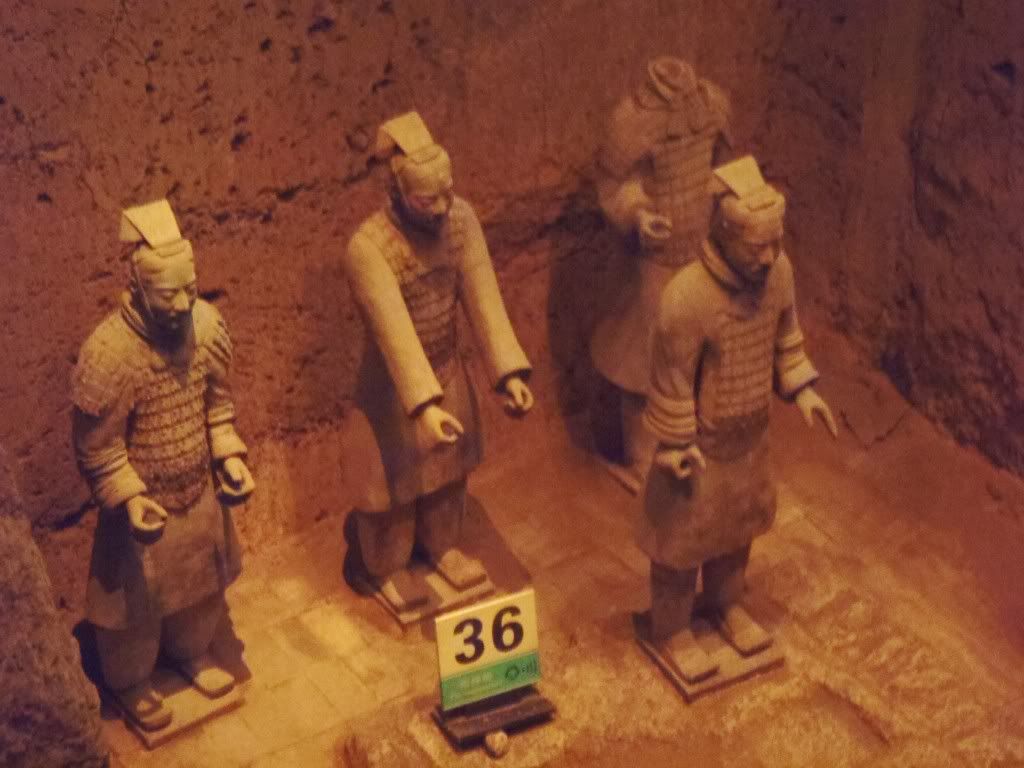
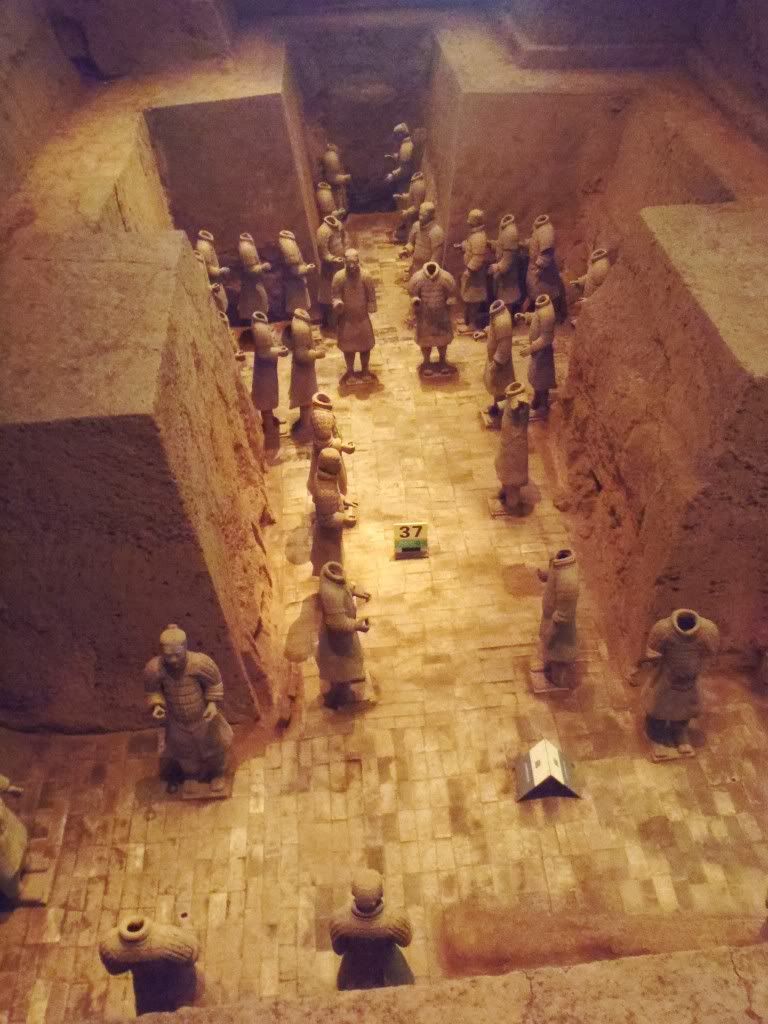
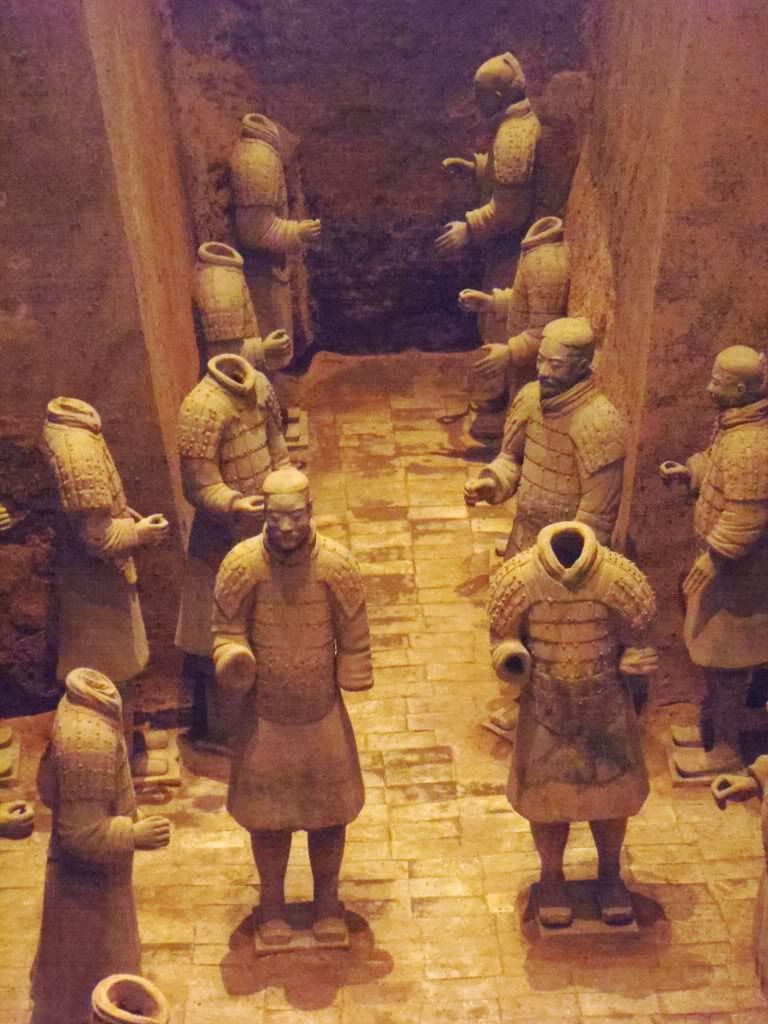
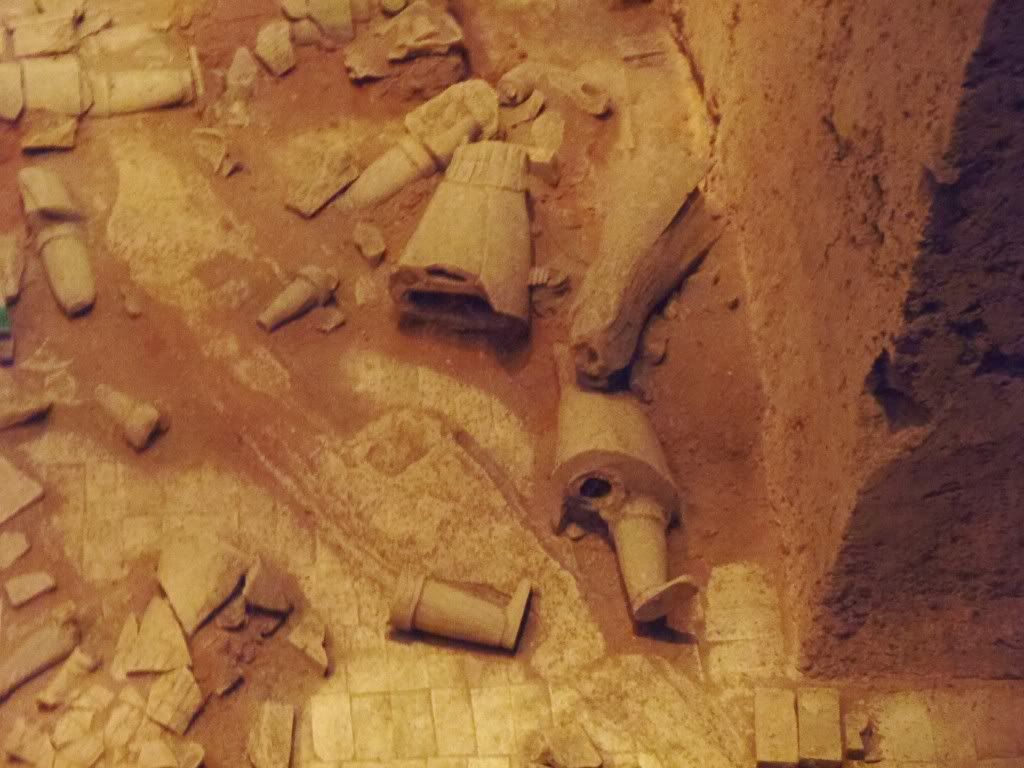
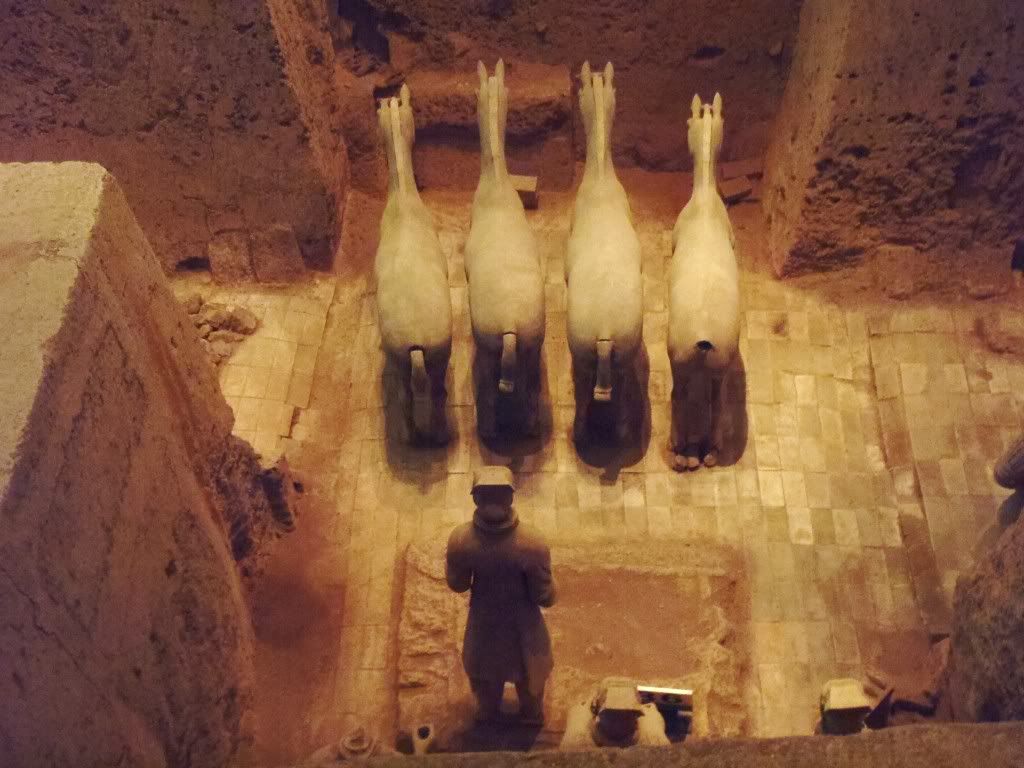


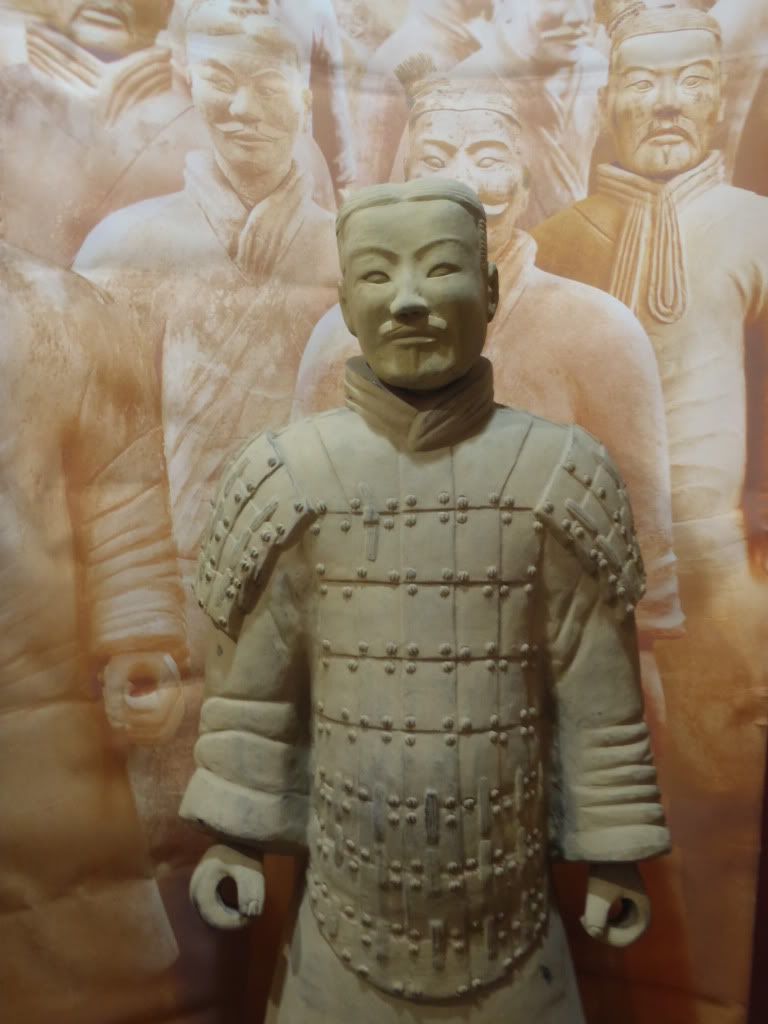
Pit 2 was up next and proved to be a step up from the previous pit. This pit contains a much more impressive 1300 warriors and horses, with still more being dug up. The grid in which they were found represents Qin Dynasty battle formations. Sadly, most of the hall is still being worked on so most Warriors are still in their vaults and thus not visible to visitors. Luckily the proprietors of the museum thought it smart to put some of the finest Warriors in glass cages.
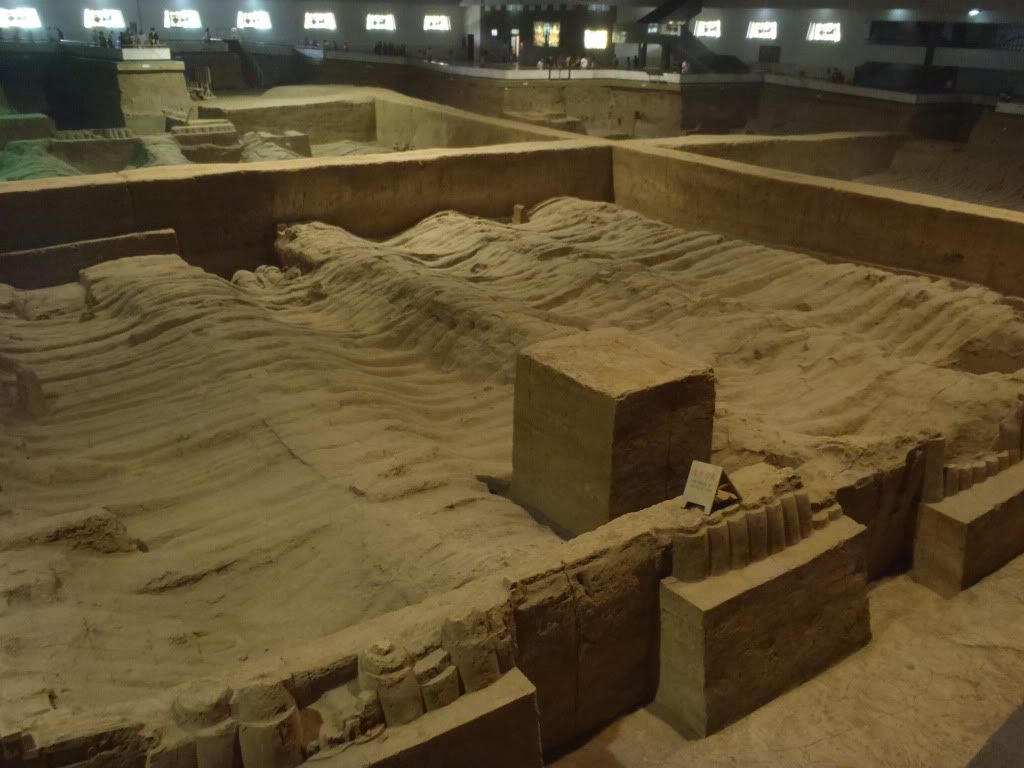


The standing archer, with his long arms and unarmored body, was found ready to shoot. The cavalryman and his horse – always similar in height – were both decorated and well-armored. The high-ranking officer wore double layered clothing and fish-scale armor. The middle-ranking officer had a slightly simpler outfit compared to his higher-ranking compatriot. Finally, the kneeling archer was discovered without any weapons. He, however, is believed to have held a crossbow, as the position of his arms suggests.
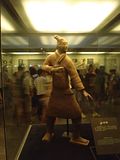
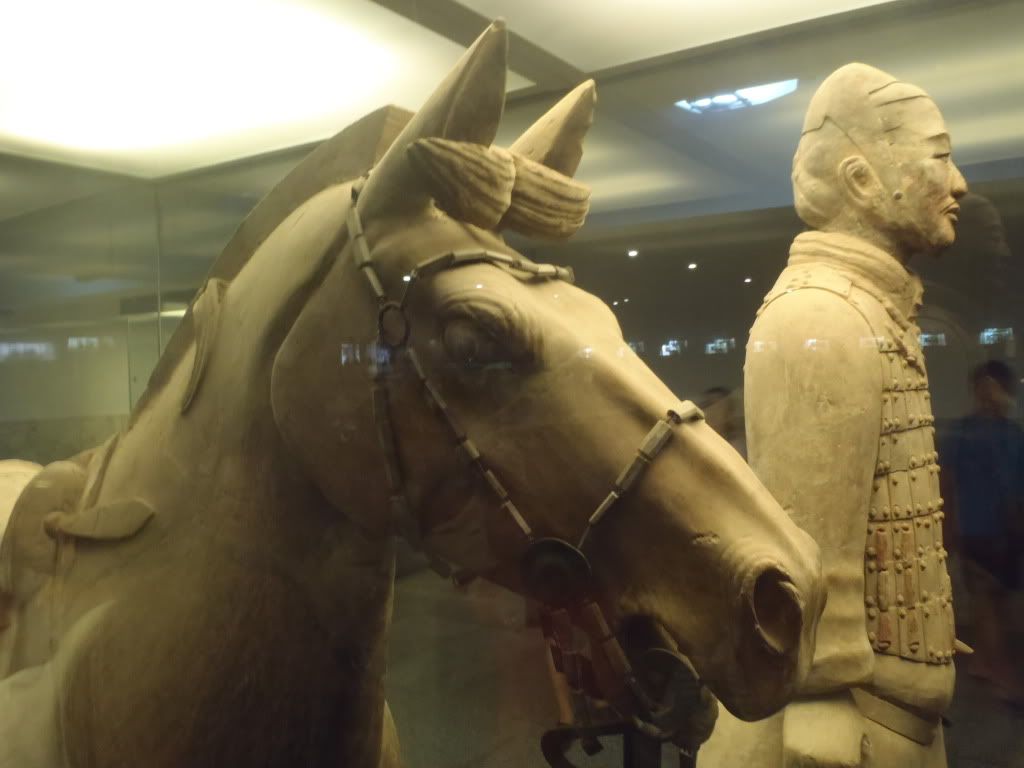
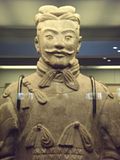
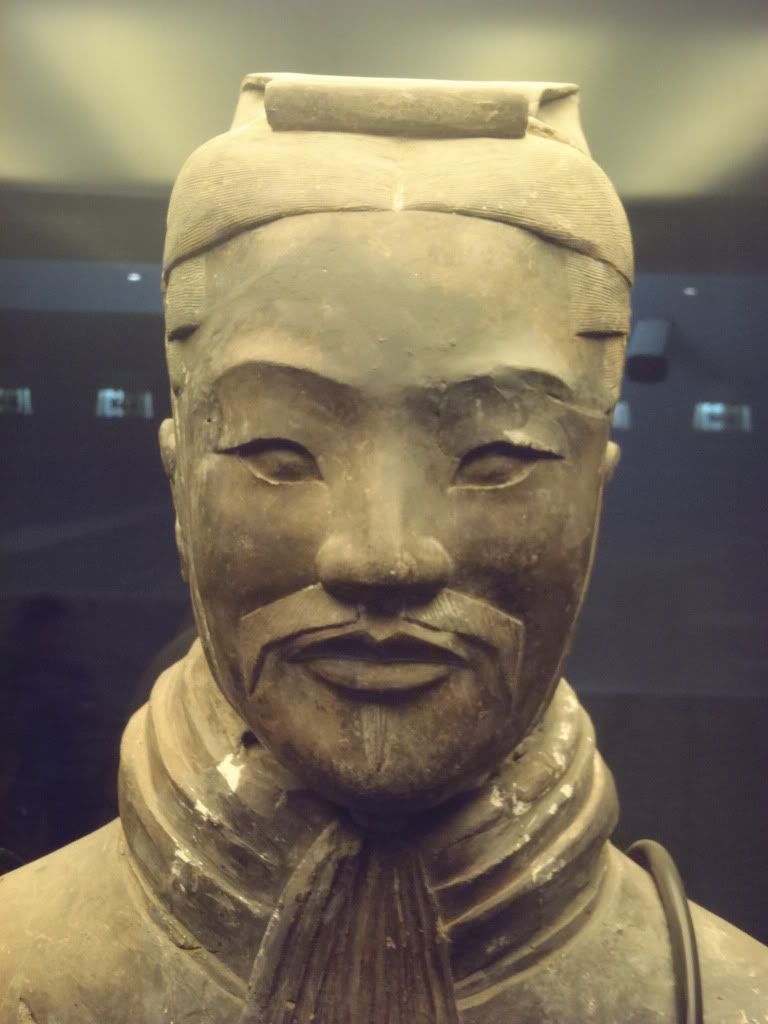
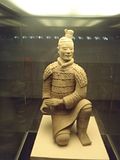
We also learned about the myriad weapons the Qin possessed. Nearly 40,000 weapons were discovered in the different pits, all of high quality even for today’s standards. Apparently the Qin used a chrome-plating technique, something the West only managed to invent in the 1950s. Quite impressive! Walking further through the pit showed us some fine examples of the paint originally used to decorate the Warriors. I cannot believe traces of the paint can still be seen on some of them.
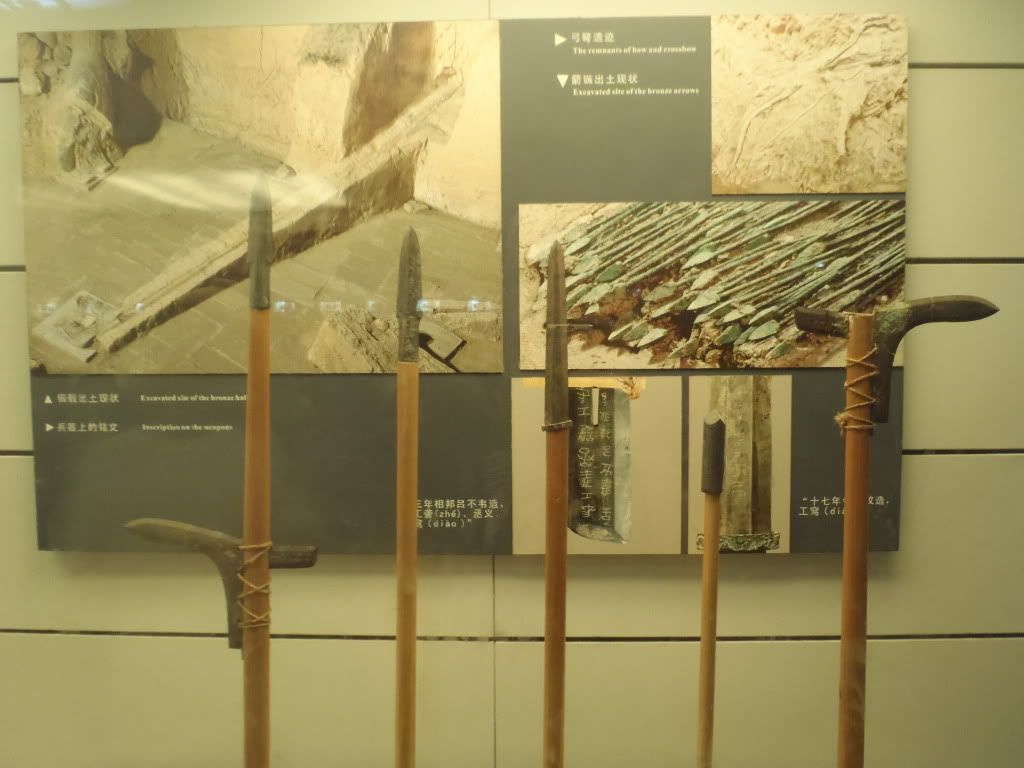

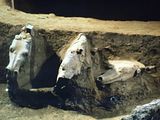
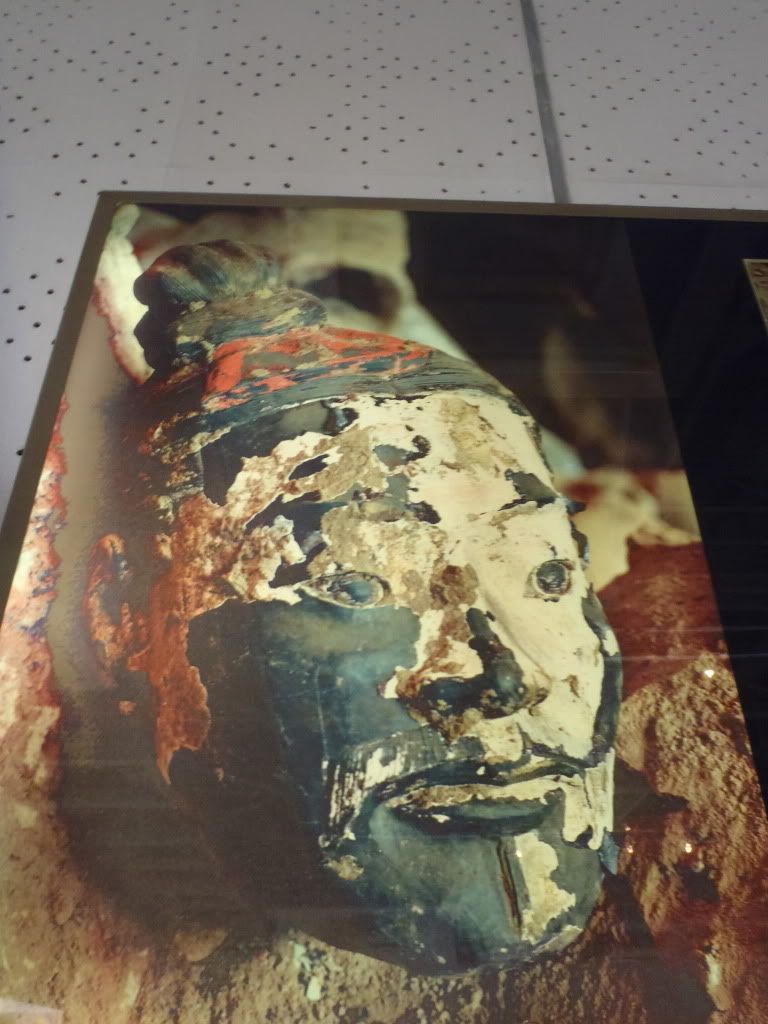
The highlight of the day was definitely Pit 1. Lonely Planet: “It contains 6000 warriors and horses, all facing east and ready for battle. The vanguard of three rows of archers (both crossbow and longbow) is followed by the main force of soldiers, who originally held spears, swords, dagger-axes and other long shaft weapons. The infantry were accompanied by 35 chariots, though these, made of wood, have long since disintegrated.”
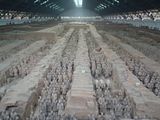
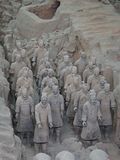
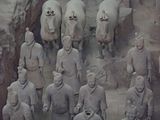
Francesca and I took our time in the maddening heat and crowds, always looking for the best spots to get a few pictures. Be ready to be amazed! In the back of the enormous hangar the works-in-progress showed us how much of a jigsaw puzzle rebuilding the Warriors must be. Most of the Terracotta has been smashed and whole bodies just lay sprawled over a few square meters, ready to be reassembled to join the ranks of the Emperor once more.
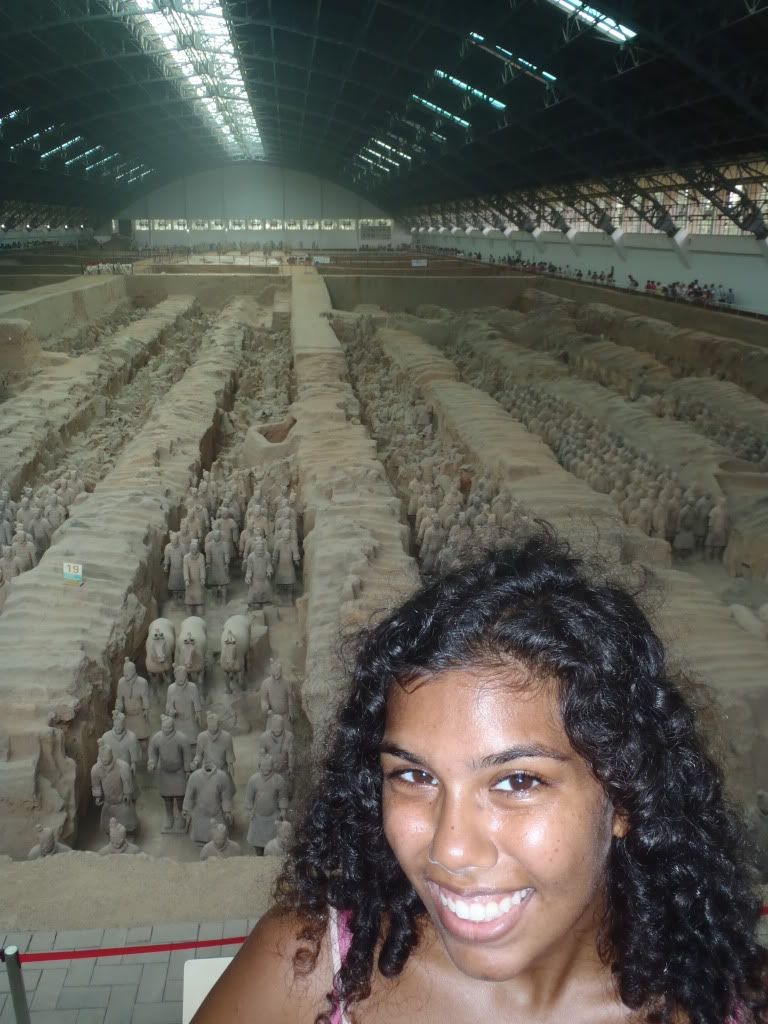
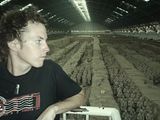

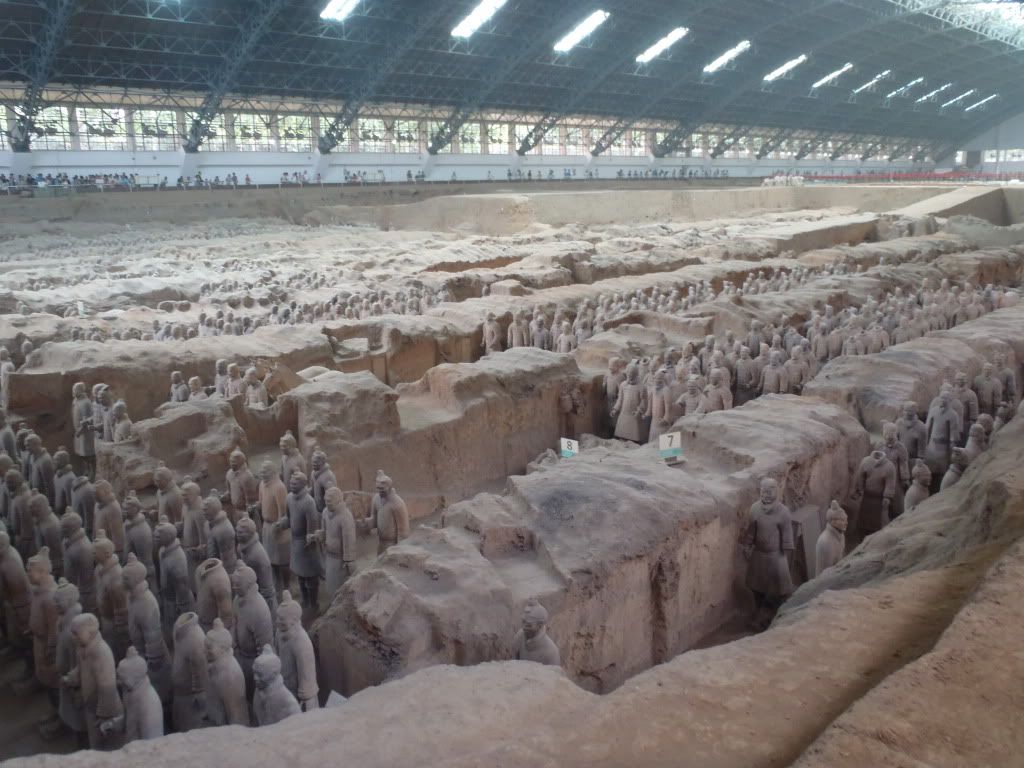
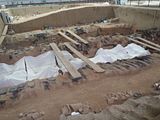
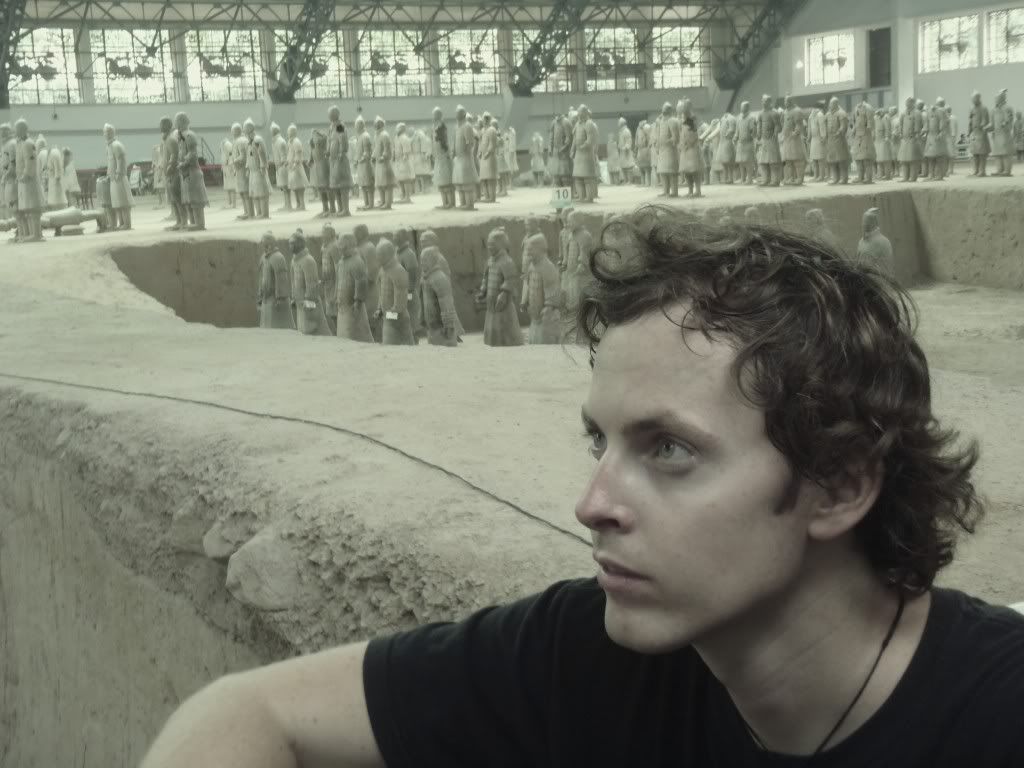

Other than the 3 pits the Army’s complex also contains a small, but interesting museum. Highlights are some more Warriors in perfect condition and pictures of some of the unique faces, expressions and hairstyles. We also saw pictures of other pits, and examples of the artifacts found there. The idea of stone armors had apparently been considered feasible, so we saw full body armor and a helmet made out of stone. The pit filled with acrobats proved the Army had also been provided with much-needed entertainment.
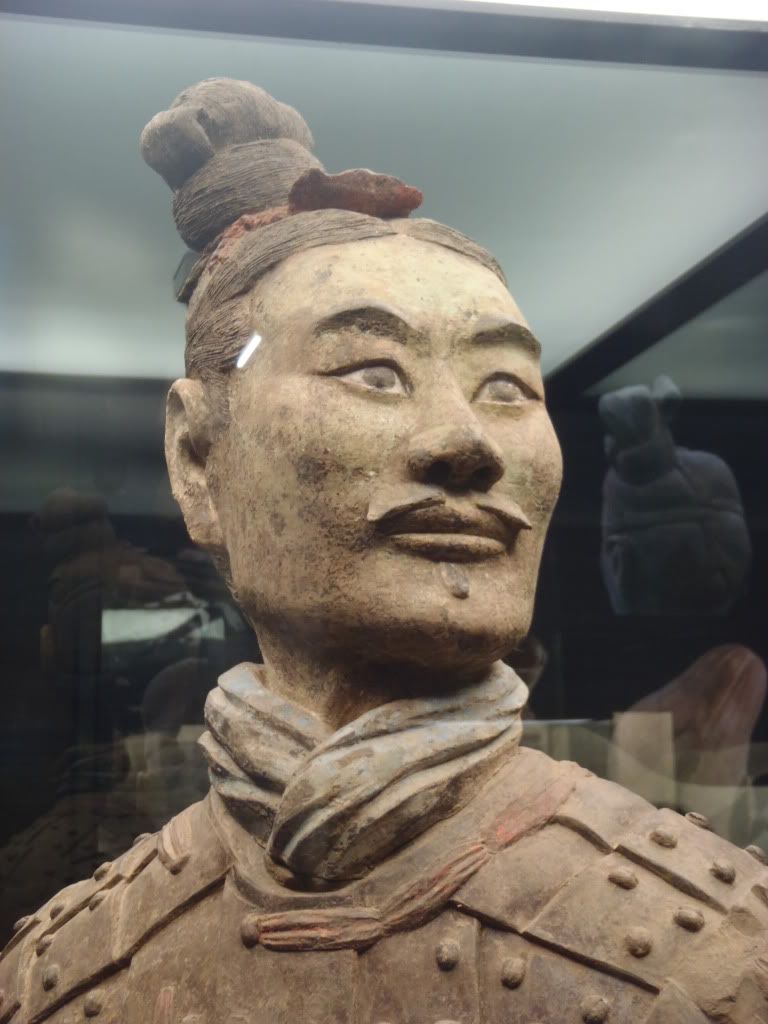
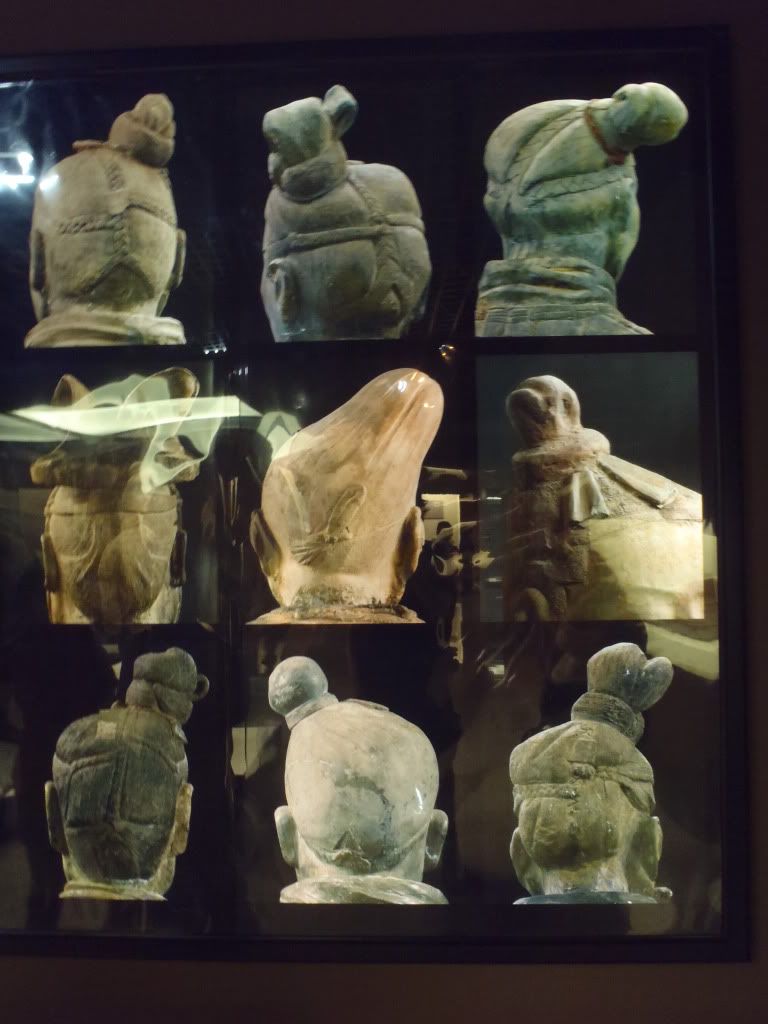
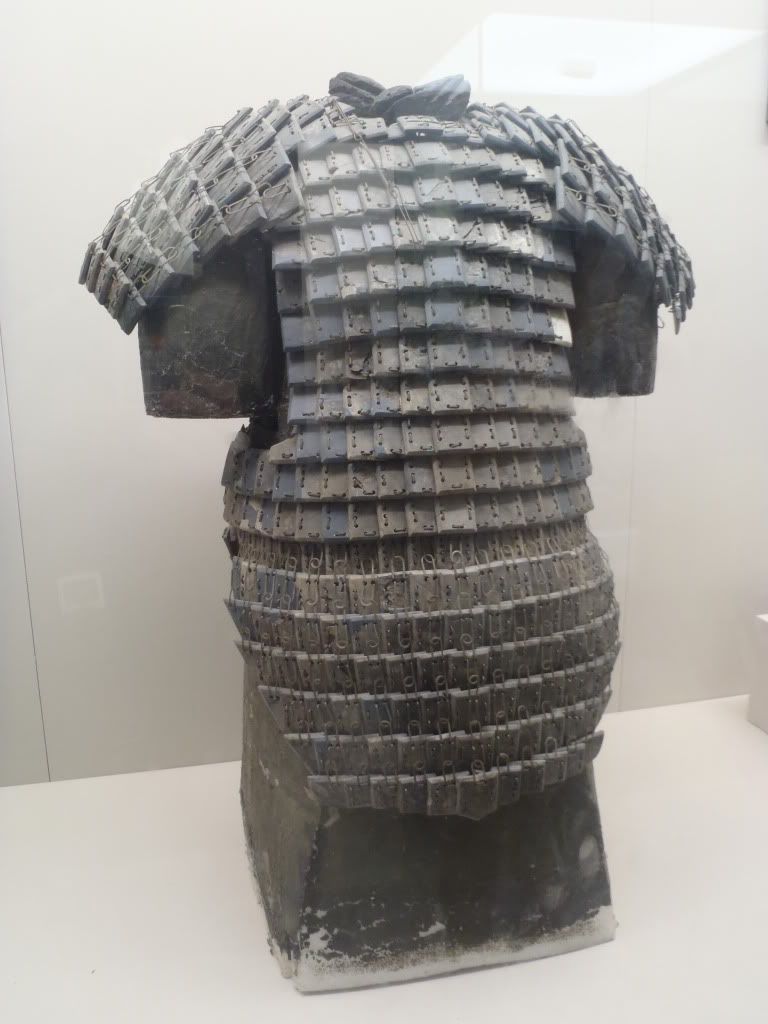

A little creepier was the giant model of a Warrior holding a little girl’s hand. I didn’t remember, but the sign read it had been used during the Olympics. The two giant marionettes are reportedly the world’s largest and celebrate some successful new conservation and preservation methods. Absolute highlight of the museum were the color-painted bronze chariots and horses found near Qin Shi Huang’s tomb. Pretty cool to see how the severely-damaged chariots have been brought back to life.
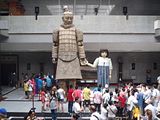

The visit to the museum marked the end of our visit to the Army of Terracotta Warriors. For me, it was definitely the highlight of China so far. Francesca and I made our way to the bus station and caught the first bus back to the train station. We’d planned to meet up with Raphael for dinner in town. He wasn’t entirely sure what time he’d get off work though, so Francesca and I had some time to kill. After purchasing some new credit for our phone – never easy in China – we took a taxi to the sizeable Drum Tower, once used to mark nightfall in Xi’an.
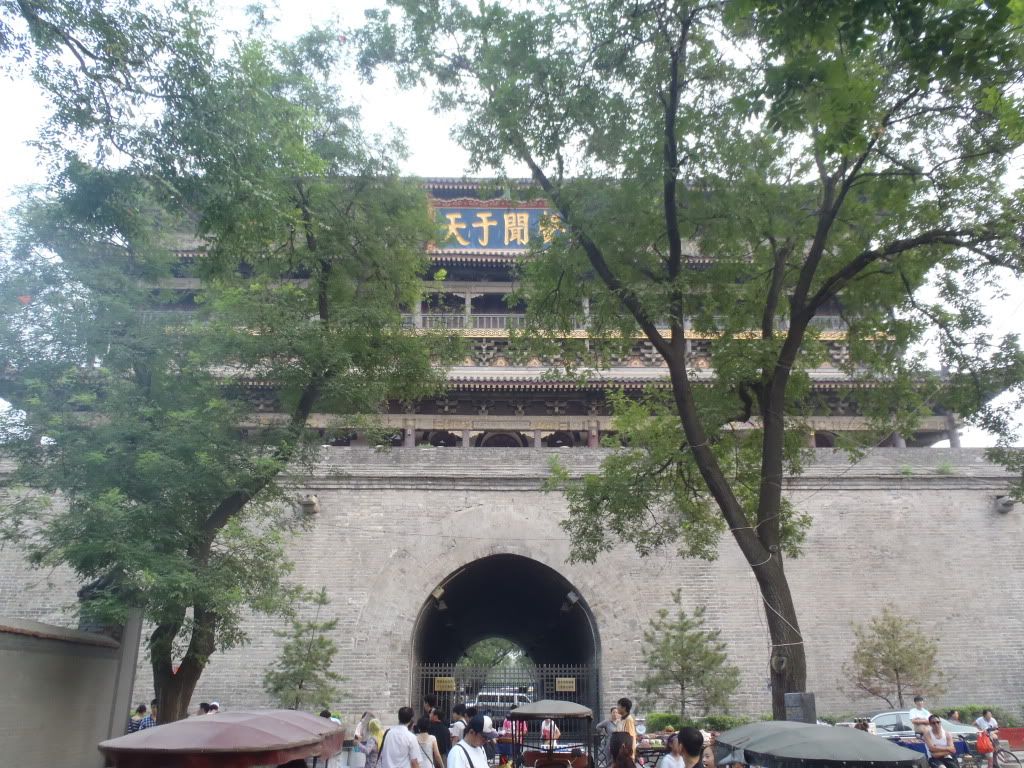
From here we made our way into the Muslim Quarter. The Muslim Quarter offered a nice respite from the rest of the city, even though the hawkers were just as annoying. Our walk through some of the narrow lanes was interesting and led us to the Great Mosque, one of the largest mosques in China. I wasn’t sure if we should waste time/money on the decaying complex, but Francesca was interested so we headed inside. Construction on the Mosque started in 742 and the whole thing still looks decidedly Chinese. In fact, if it wasn’t for the prayer mats in the final hall you could’ve fooled me if you’d told me it was just another temple. Furthermore, about 2 minutes into our exploration Francesca remembered she’d actually seen the Mosque before when she visited Xi’an in 2007.
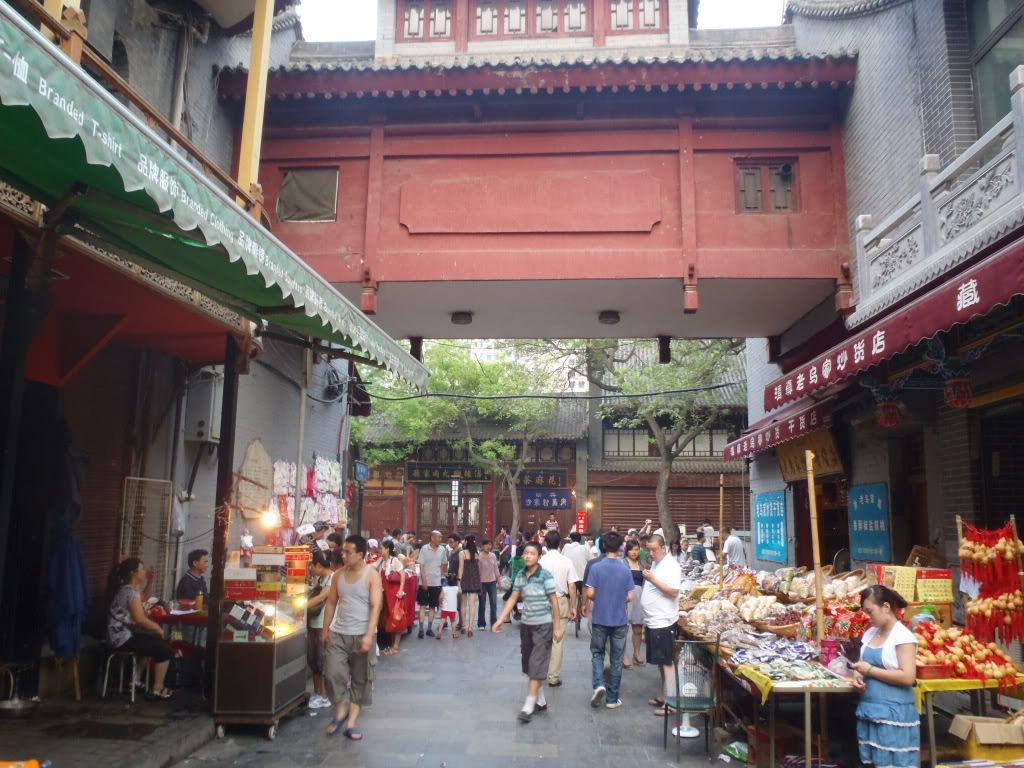
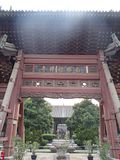



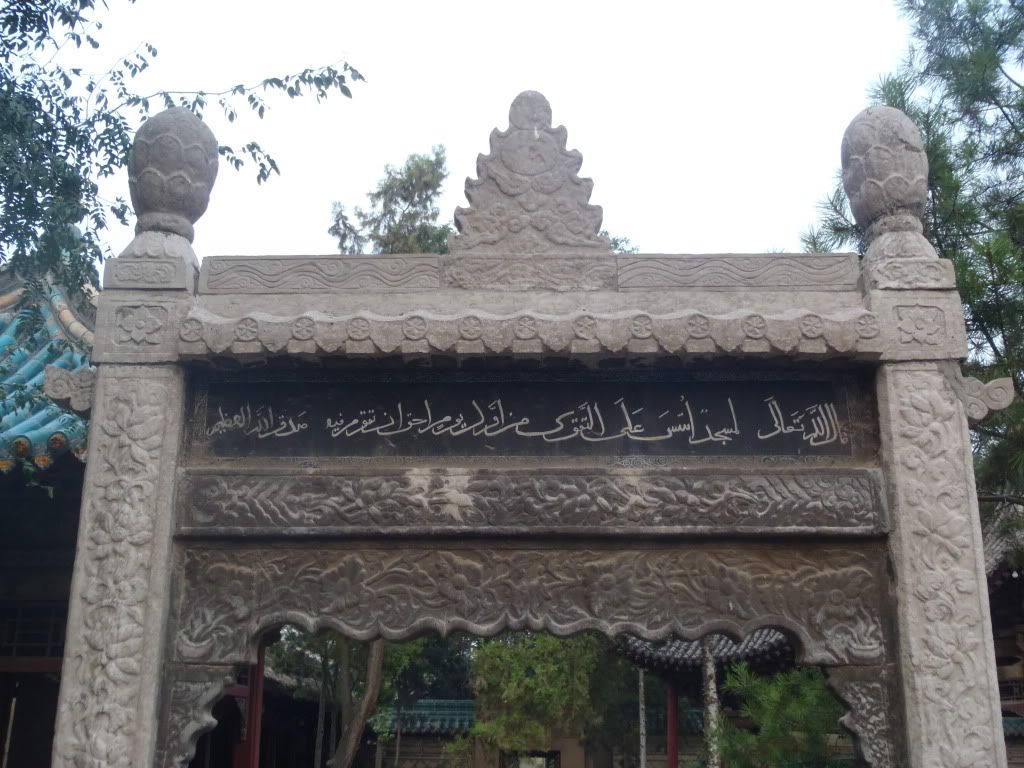
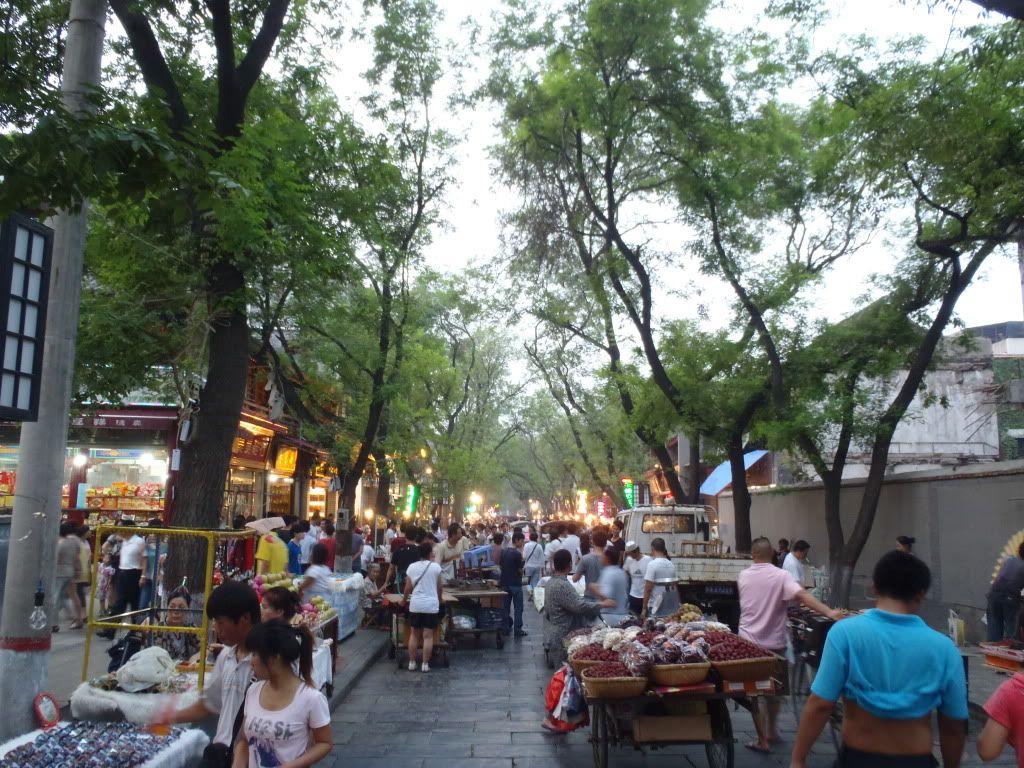
Raphael had texted us to meet in the McDonald’s to go for dinner. We met him there well past 7:00 PM and followed him to a Spanish friend of his, who brought two backpackers with her. The Spanish girl, Laura, had just moved to Xi’an to teach Spanish and was just getting settled. The other two backpackers, Paula from Argentina and Jo from France would be staying with Raphael as well. As we walked and talked, making our way to a random restaurant I suddenly felt a little tug at our purse. I’d seen a guy walking a little close to me before, but didn’t think much of it. This time however I checked the purse, and saw it was half-opened. I gave the scumbag a firm push onto the road (sadly, no passing cars) and checked the purse for our valuables. Thank god everything was still there!
Our party of 6 found a local restaurant not much further down the street and sat down. We decided to order a mix of dishes together to share. Some sweet and sour pork, filled dumplings and a selection of vegetables filled the table to the brim. We did a pretty good job with the 5 of us; Francesca suffered from a headache and didn’t eat. After dinner the rest of the crew wanted to go to a pub for a drink. We had to say ‘no’ to that offer. Raphael offered to give us the keys and helped us find a taxi – again, not easy in China! – to his place. Back at his house I made Francesca another grilled cheese sandwich. It filled her up, but didn’t take the headache away. Sleep came quickly that night; it seemed we needed some rest.
In order to give our bodies just that the 3rd of August became a very quiet day. We slept in, watched some movies and worked on our posts. I ventured into the kitchen a few times and found Paula and Jo had chosen Raphael’s comfortable living room the perfect spot for some serious relaxing as well. I talked to them about their travels whilst I made Francesca another sandwich. Raphael came back around dinner time and told us he had a little party planned, having invited some other expats to his house.
Paula and Jo headed to the supermarket to pick up some groceries. Raphael and I went through his cabinets and found a box of muffin-baking-powder. Raphael was eager to try out his mini-oven so we decided to make dessert. There was one problem though: he didn’t possess any cups to bake the muffins in. Our only option was to create the dough and pour it onto a plate. Praying this would work we put the mix in the oven and saw it spread out over the plate quickly. It didn’t spill over though, and a quarter of an hour later we had a somewhat oddly shaped, but perfectly tasty mega-muffin! Since we’d made enough mix for a second muffin that one went into the oven as well. Another 15 minutes later a second, even larger, muffin appeared. Dessert, check!

Dinner, check! took a little longer. Francesca and I thought it’d be a good idea to order some pizza. Sadly, Raphael’s place was a bit too far away for some of the larger chains in town. It took a little longer, even with his command of Chinese, to explain his address to the staff of a smaller pizza place. After 45 minutes pizza finally arrived. I brought Francesca, who was still recovering in the room, the entire BBQ Chicken pizza, a coke and some muffin. I sat down with Raphael’s guests to listen to some interesting stories about Xi’an. In the meantime Paula and Jo had finished their vegetables-in-honey dish – pretty tasty! I went back to check up on Francesca after dinner, and by the time I went back outside the party had ended and people were getting ready for bed.
For the 4th of August our plans were limited once more. Since I’d forgotten Francesca’s hat in the taxi to Taiyuan I’d been busy trying to get it back. Through the owners of Harmony Guesthouse in Pingyao we’d found somebody willing to take the hat with them to Xi’an. I ventured out late in the morning to pick up the hat from a hostel in the city. Because taxis are ubiquitous, but almost always unavailable I spent a good 15 minutes outside Raphael’s place, waiting for one to open its doors for me. When that finally happened the rest was over pretty quickly. I left a thank-you note for the travelers that had been so kind to bring Francesca’s premium souvenir back and returned to my girlfriend.
We had to get to Xi’an’s airport for our flight to Chongqing later that night, and had the choice between staying at Raphael’s until 8:00 PM or so, or heading to the airport a little earlier to try and see Emperor Jingdi’s Tomb. We chose the former option and said goodbye to Paula and Jo around 5:00 PM. I also took some pictures of the impressive view of the city from Raphael’s balcony. Note the large number of high rises and cranes… They’re always building something in China! I’d called Raphael earlier that afternoon to explain our choice. We felt bad we couldn’t say our farewells and thanks in person, but he understood and wished us a pleasant trip.
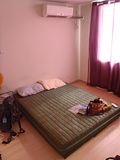
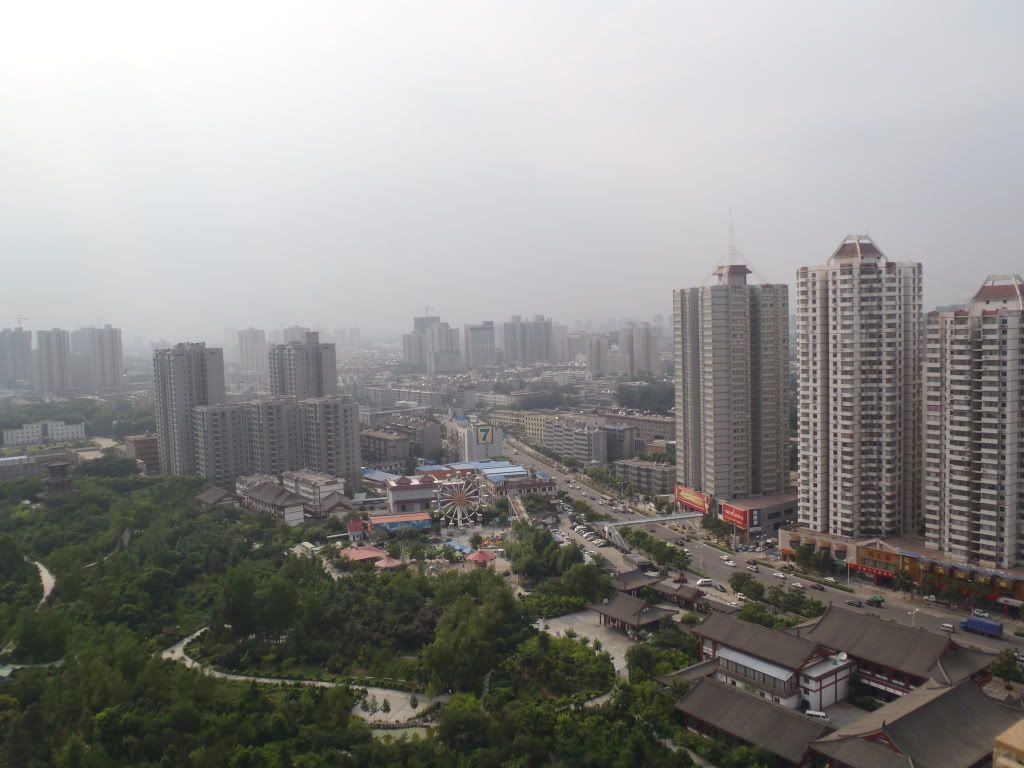
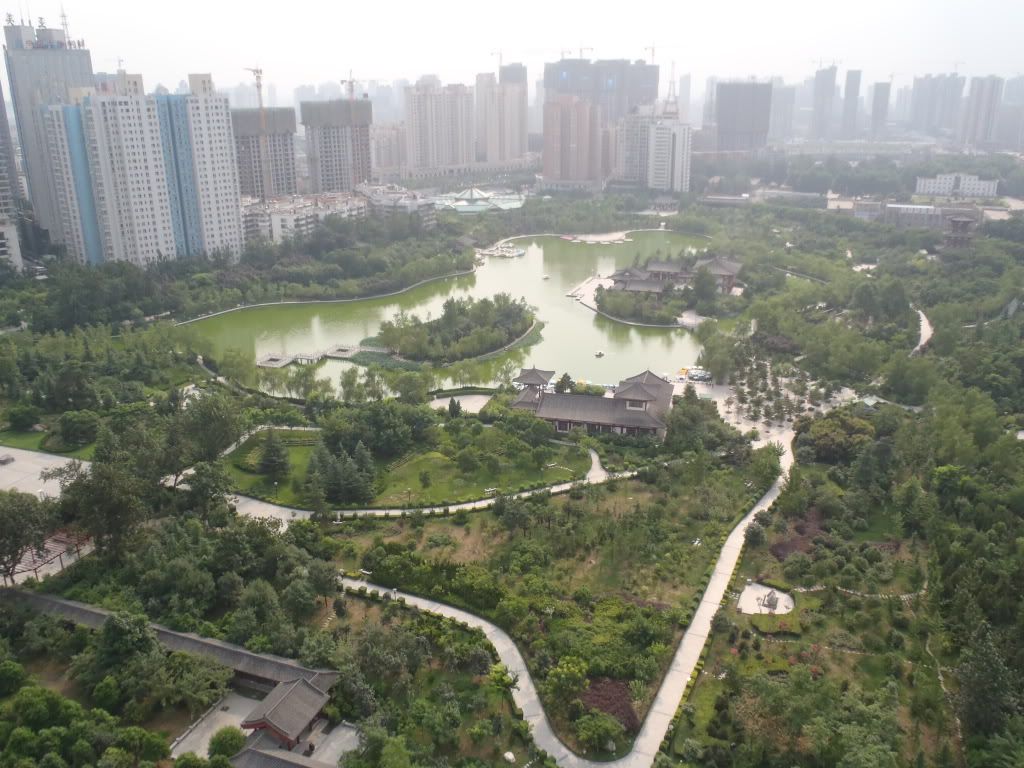
Finding a taxi turned out to be a little easier this time around. Lonely Planet had listed the Tomb to be close to the airport, so when I told the driver to take us there I figured it’d be no problem to ask him to also take us to the Tomb. To our surprise he had no idea where we wanted to go… I fixed the status quo by calling a hostel and asking them to explain to the driver where to go. After 15 minutes of passing the phone back and forth he finally understood where to go and drove off. The drive turned out to be quite a detour and the Lonely Planet’s tip of going to the Tomb on the way to the airport was inexplicably off. Sometimes you have to wonder if they actually visit these places themselves.
When we finally arrived at the Tomb around 6:00 PM the ticket office was empty. Francesca tried to ask some foreigners coming back to their tour bus and I called the hostel staff again to translate a Chinese person’s answer. Both came back with the same result: the museum and Tomb weren’t open until 7:00 PM like the Lonely Planet had listed; they’d closed their doors just a few minutes before. We had no choice but to ask the taxi driver to take us to the airport. Severely disappointed Francesca and I sat down and completed the trip there.
Since we were now way early we couldn’t even check in yet. Francesca found a little restaurant with WiFi available and sat down for a drink. We pulled out the laptop and researched our options. Changing our flight would be an option, since we didn’t have major plans for the next city, Chongqing. I called Ctrip and found out that changing the flight would be free. In the meantime Francesca had looked up pictures of the Jingdi Tomb and museum. She’d remembered seeing another Tomb on her previous trip. Another Google-search gave us the itinerary of said trip. Guess what! She’d already seen the Tomb! Relief came rapidly, since I wasn’t terribly bothered about not seeing it anyway, and Francesca now vaguely remembered her encounter with Emperor Jingdi and his mini-army.
Our flight to Chongqing saw us landing in China’s largest city around midnight. Our host had told us that getting to her place would not be very easy. Plus, the road to the airport had been under construction for some time, further complicating the drive. After I texted her we were on our way to our place she called and asked to speak to the driver. They agreed to meet near the entrance to the gated community she and her parents lived, which was exactly where we met Jacqueline. We thanked her thoroughly for staying up for us whilst she drove us to her home. In the car we met her awesome dog Guai Guai and talked about our travels and plans for Chongqing. It was nearly 2:00 AM after we had had a drink – no surprise we fell asleep so easily. Just look at the picture of our awesome room and bed!
